Moths of the Lower Rio Grande Valley
Less Common, but Regular Moths (Tortrids, Pyralids, & Button Moths)
Tortrids
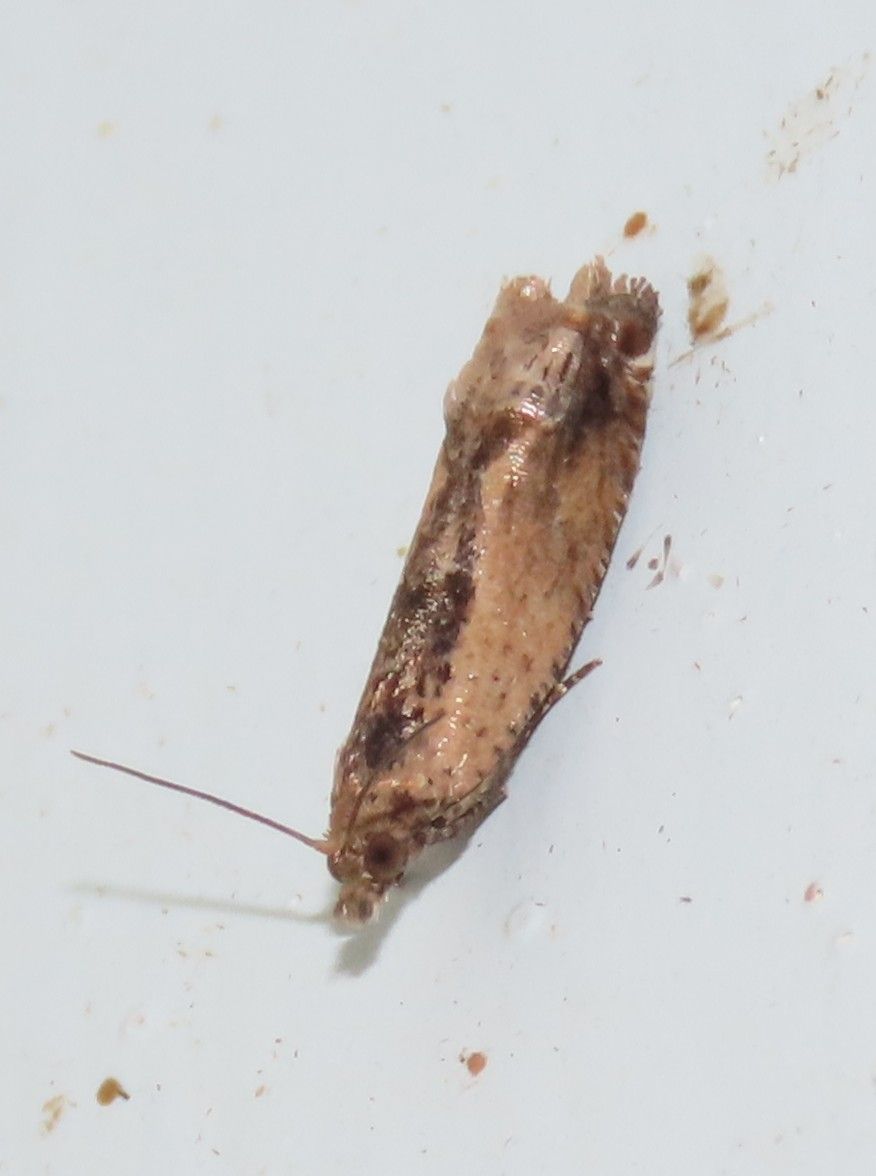
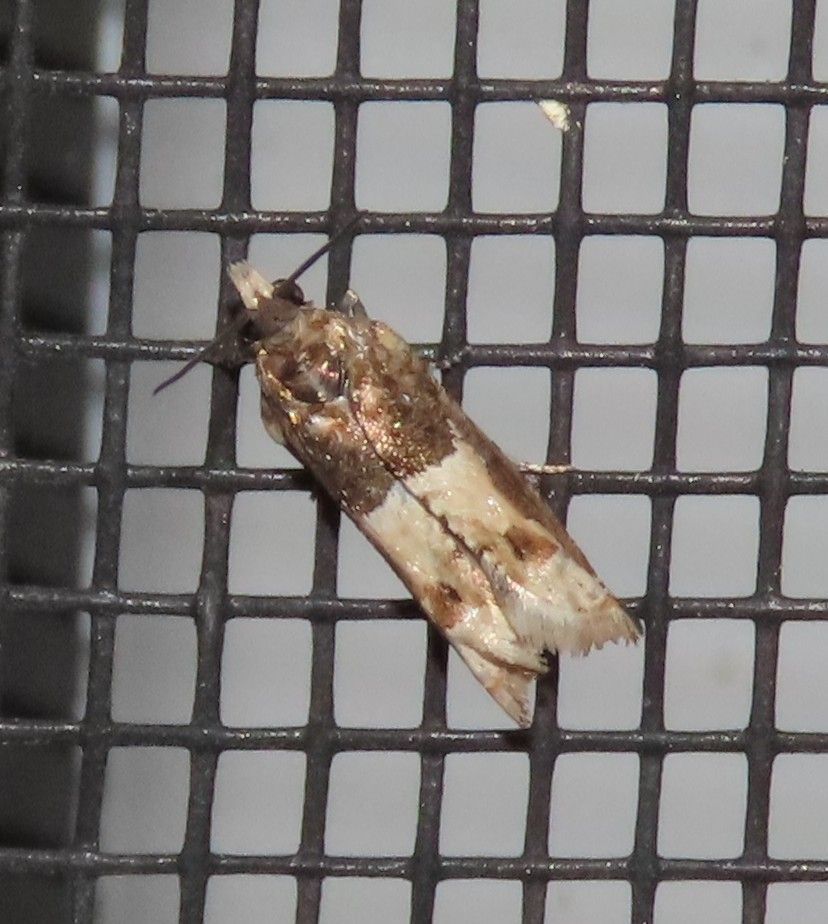
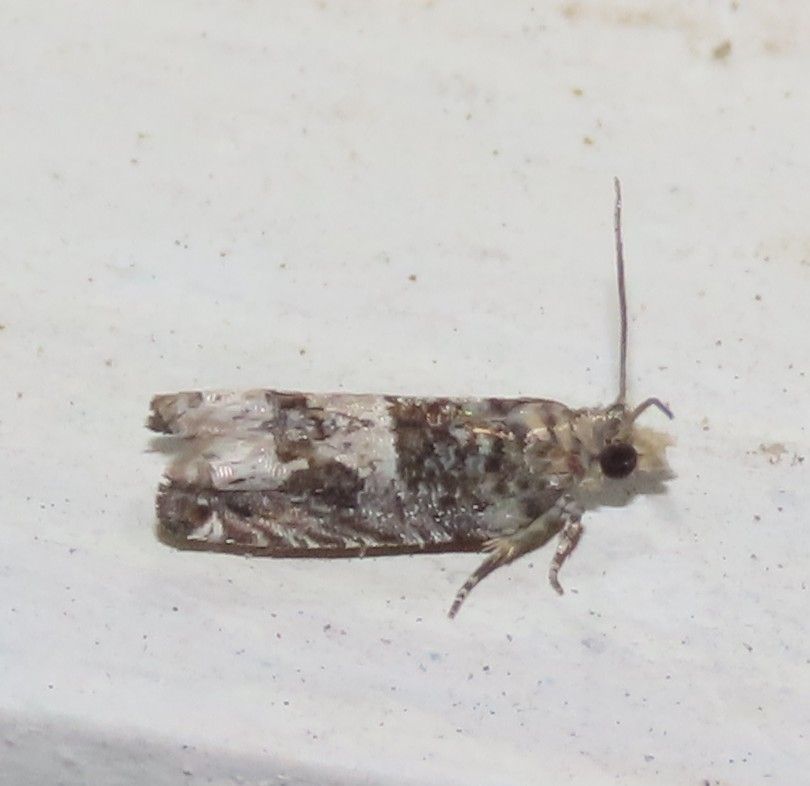
Cotton Tipworm Moth (Crocidosema plebejana of authors)
Sexually dimorphic and variable: the female (left) has a dark brown back and is buffy on the sides. The male (center and right) is dark brown with a bold creamy patch in the distal half, crossed by a brownish band. The "racing stripes" along the costa is typical of most Olethreutine tortrids. The unusual scientific name is used by BugGuide (and probably other sources) because this bug may represent more than one species! Recorded March - September.
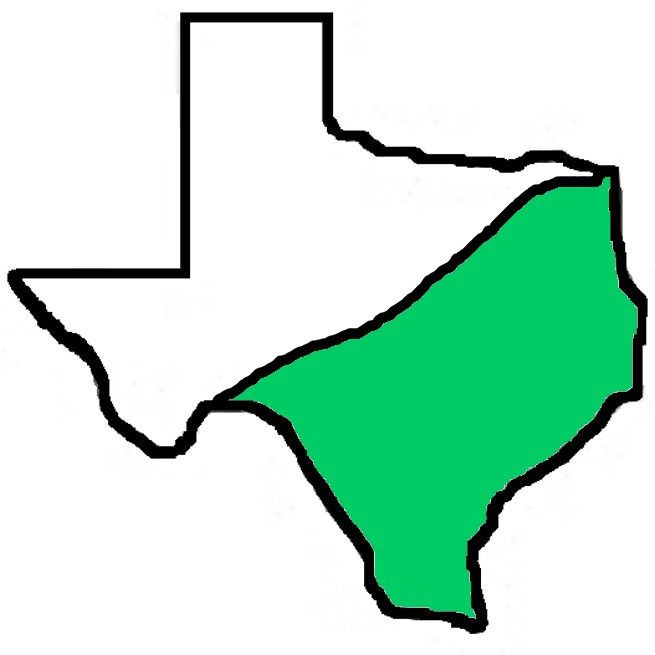
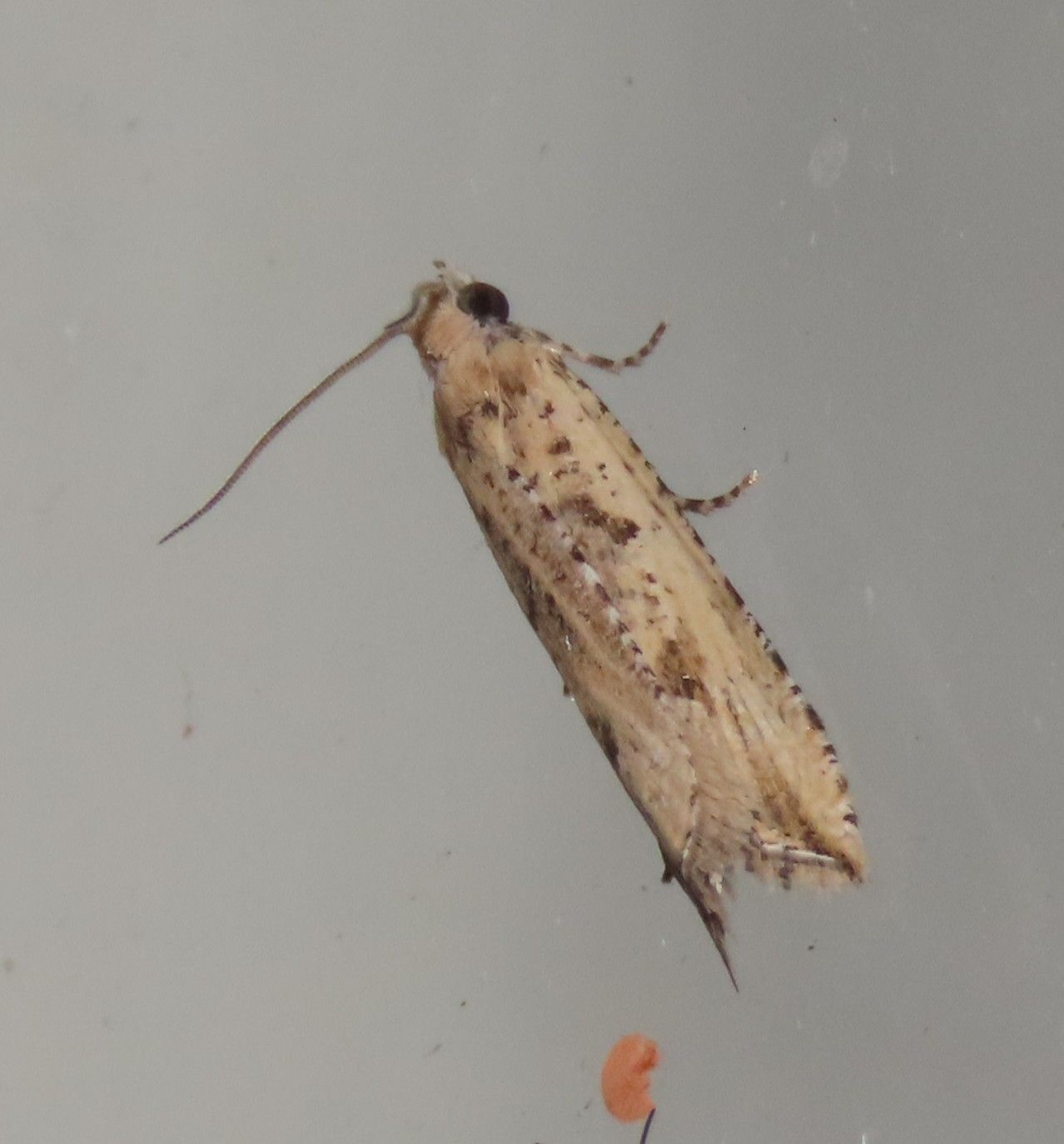
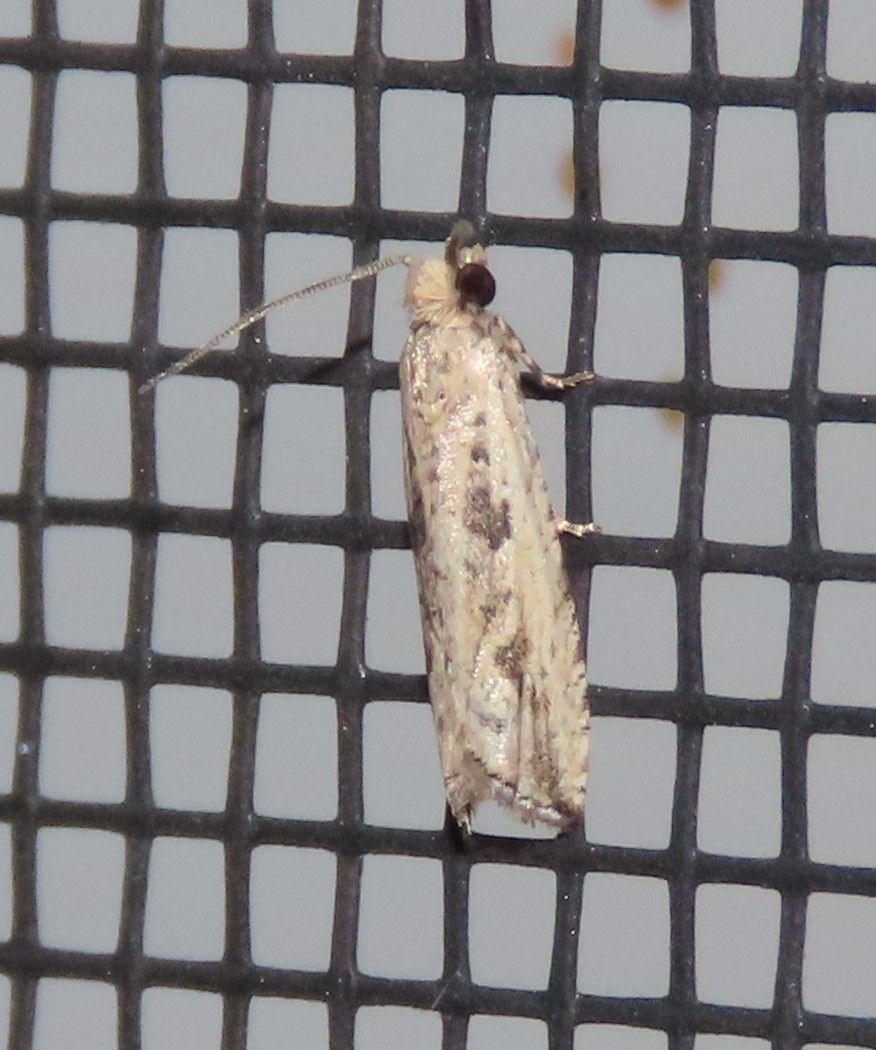

Javelin Moth (Bactra verutana)
Variable, but usually shows two strong dark blotches on the forewing. The dead giveaway is the checkered inner edge of the forewing, giving the illusion of a black-and-white string going down the back (when visible)! Beware of other Bactra species that have the same "string" but are plainer; these could also possibly show up in the LRGV. Recorded July - March.
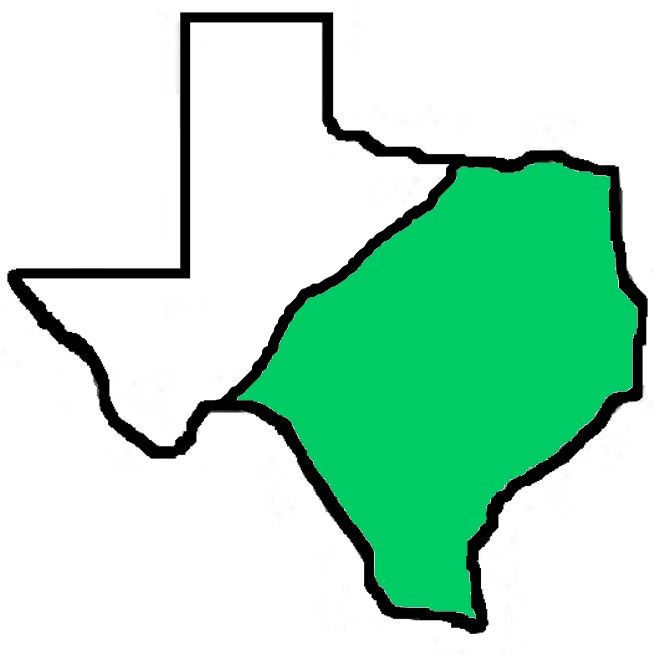
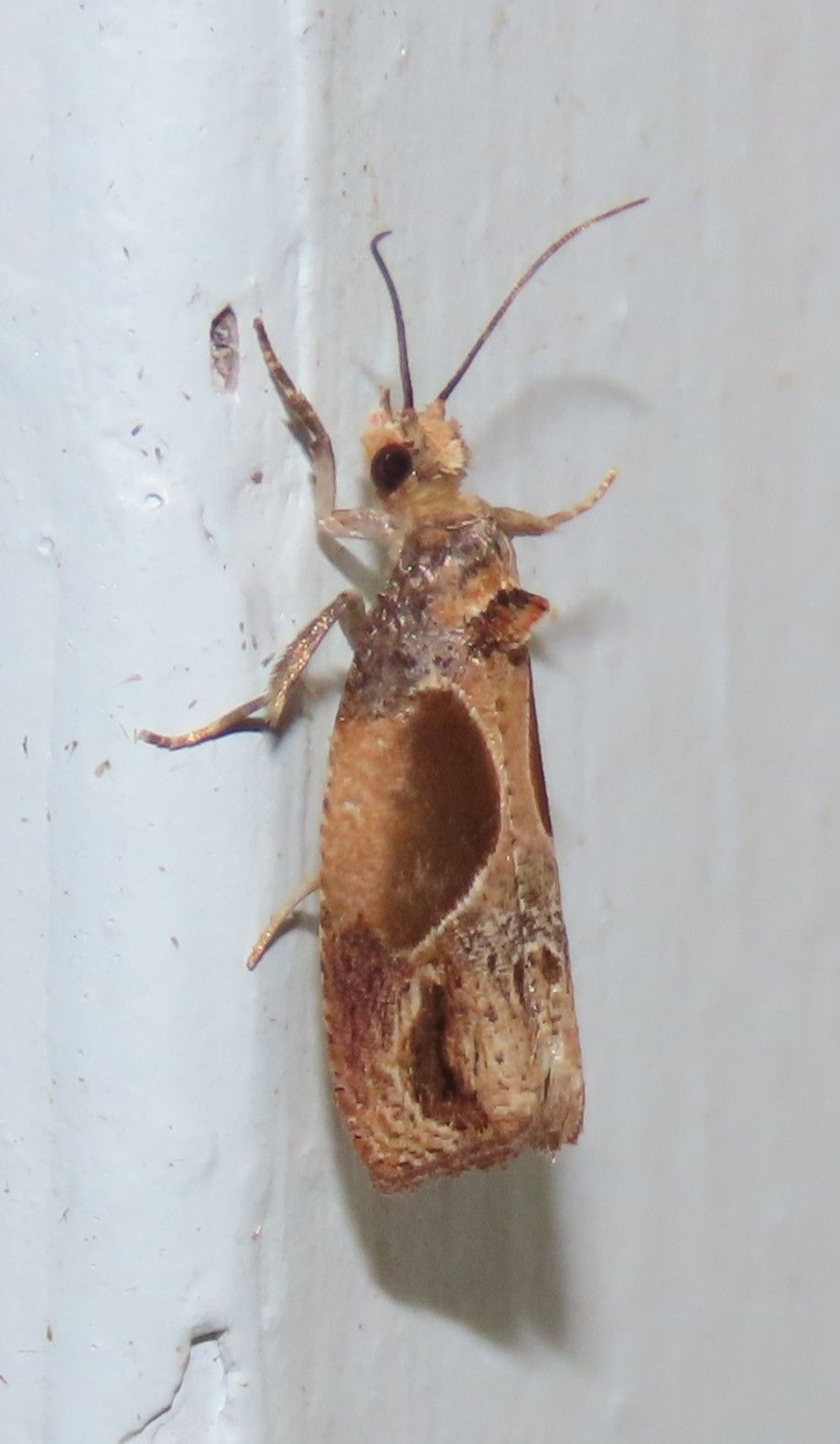
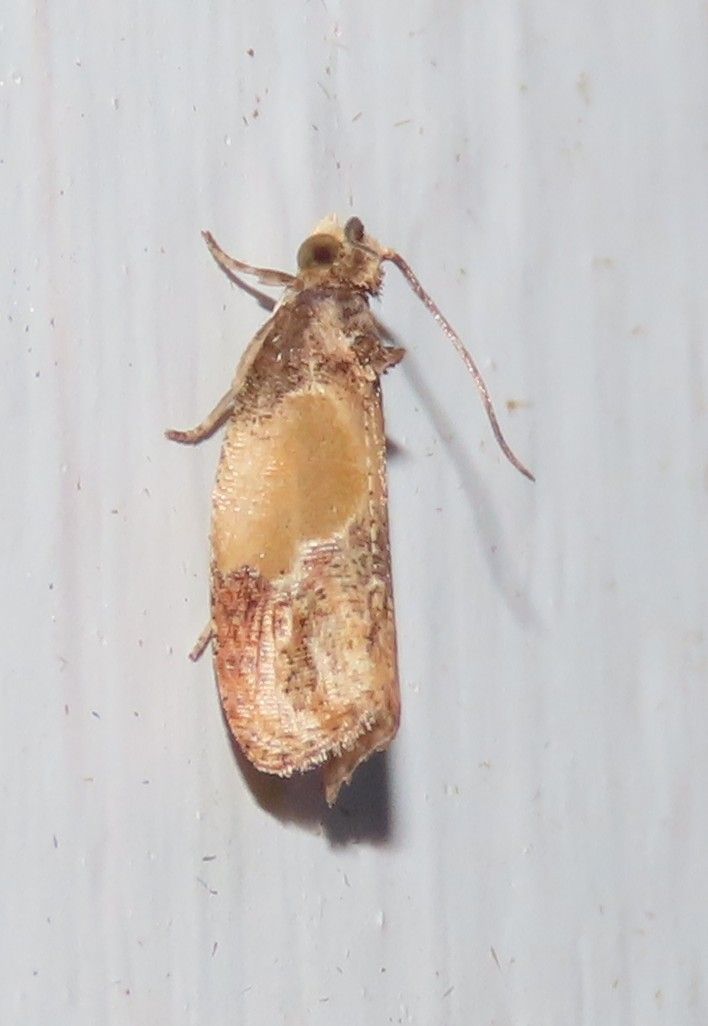
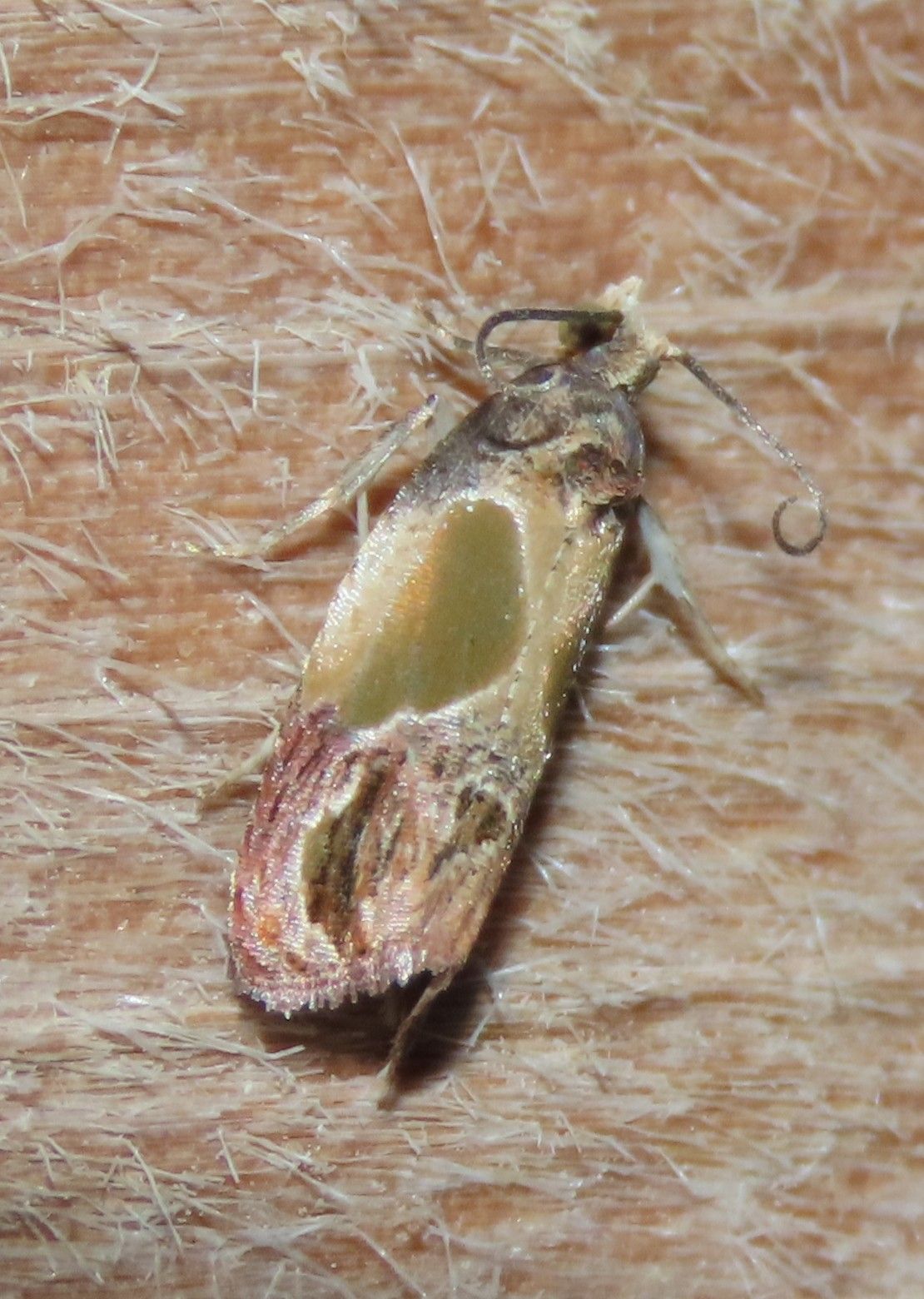
Sculptured Moth (Eumarozia malachitana)
The large, colorful median patch (ranging from chestnut to green) that blends smoothly from darker to paler towards the costa contrasts sharply with the brindled appearance of the rest of the bug! The white line outlining the patch curves sinuously and outlines another dark, crescent-shaped patch in the distal part of the forewing. Recorded October - February.

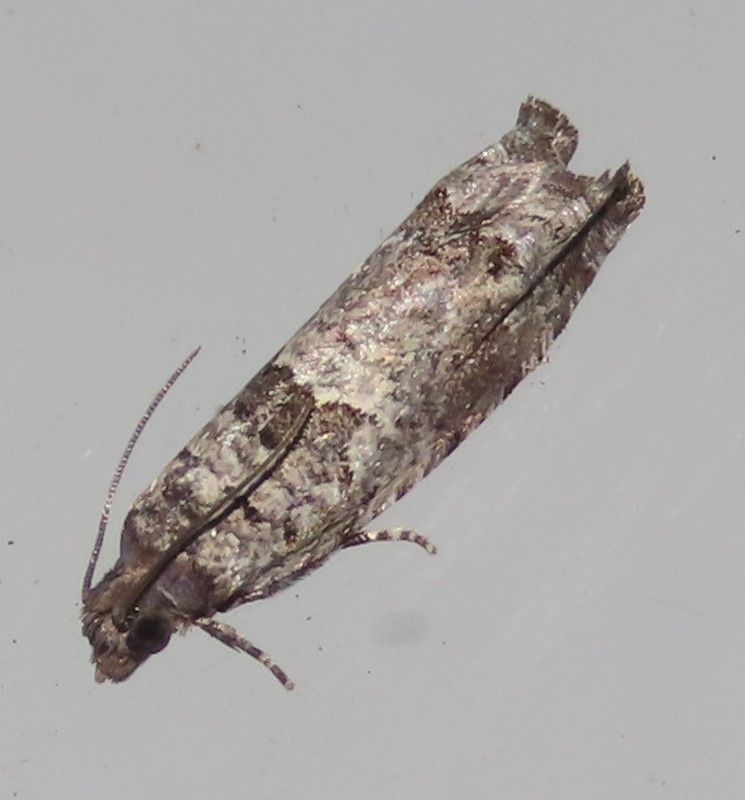
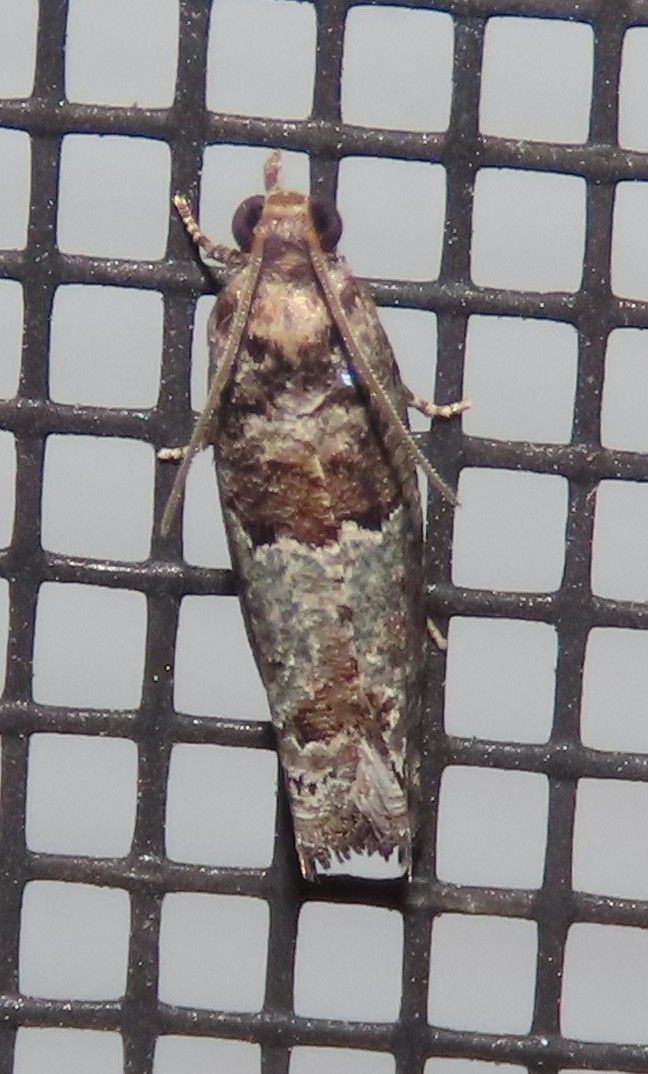
Knudson's Leafroller (Pseudexentera knudsoni)
This highly variable tortrix can be similar to the Salaciana Pelochrista (Pelochrista salaciana), but the head is usually either ochre-colored or blackish. Generally the forewings are pale with wide blackish or brownish AM and PM bands, but some bugs can look dark overall with pale bands. Recorded February to April, with records in July and November.

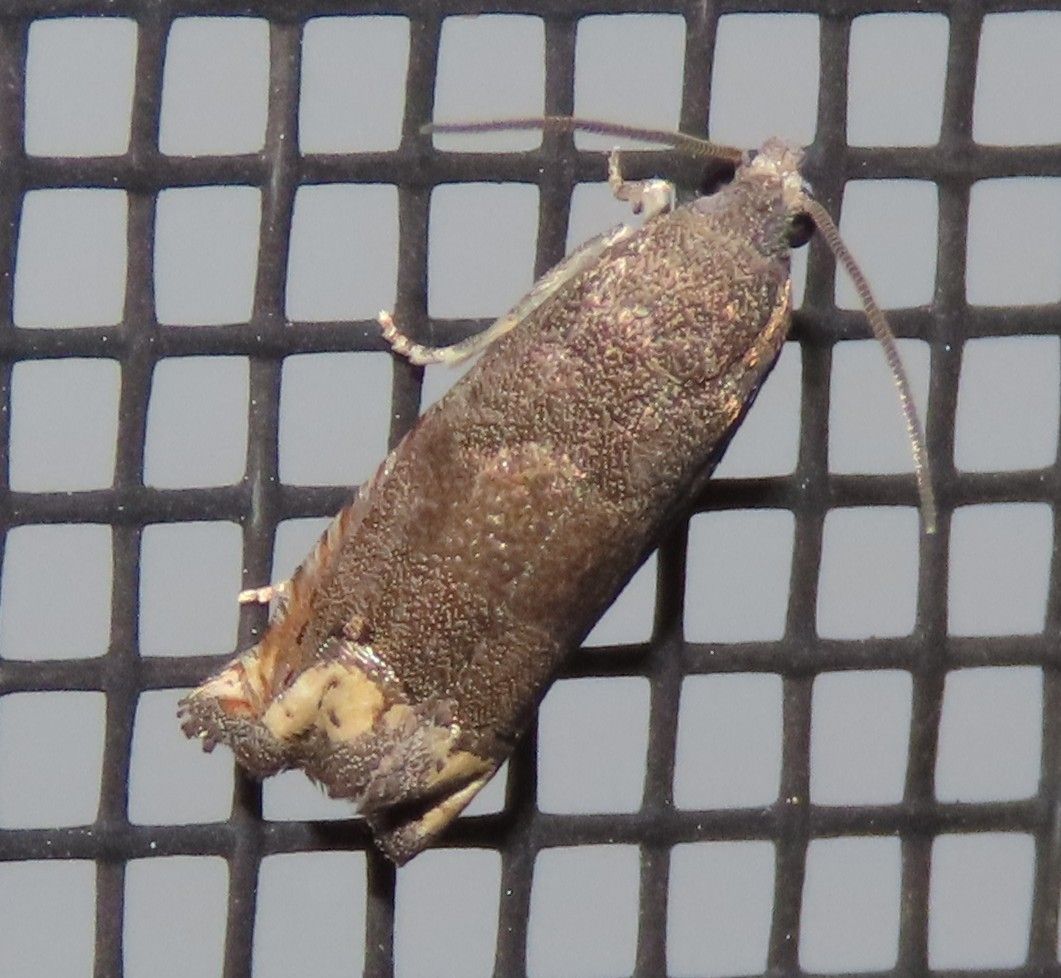
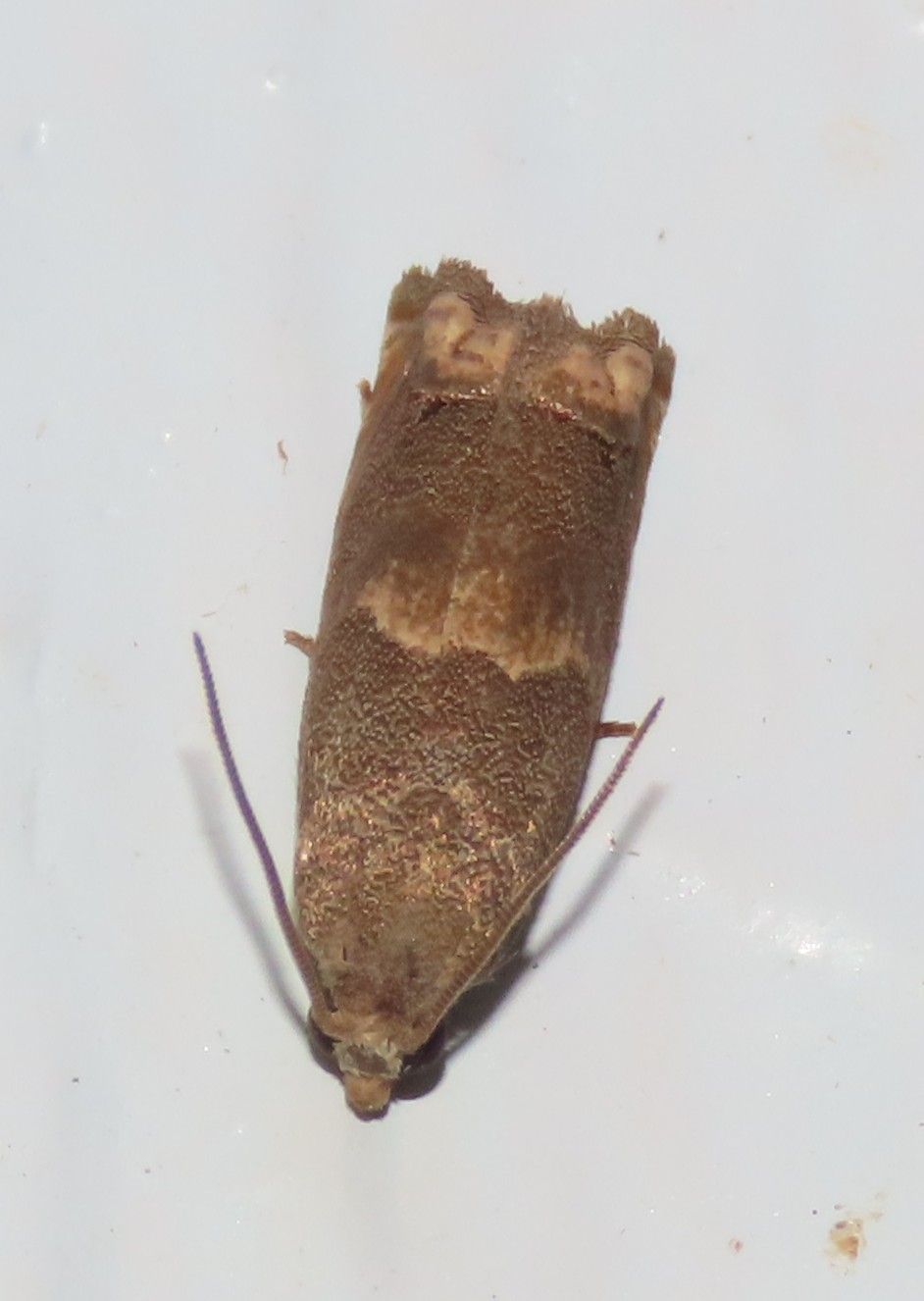
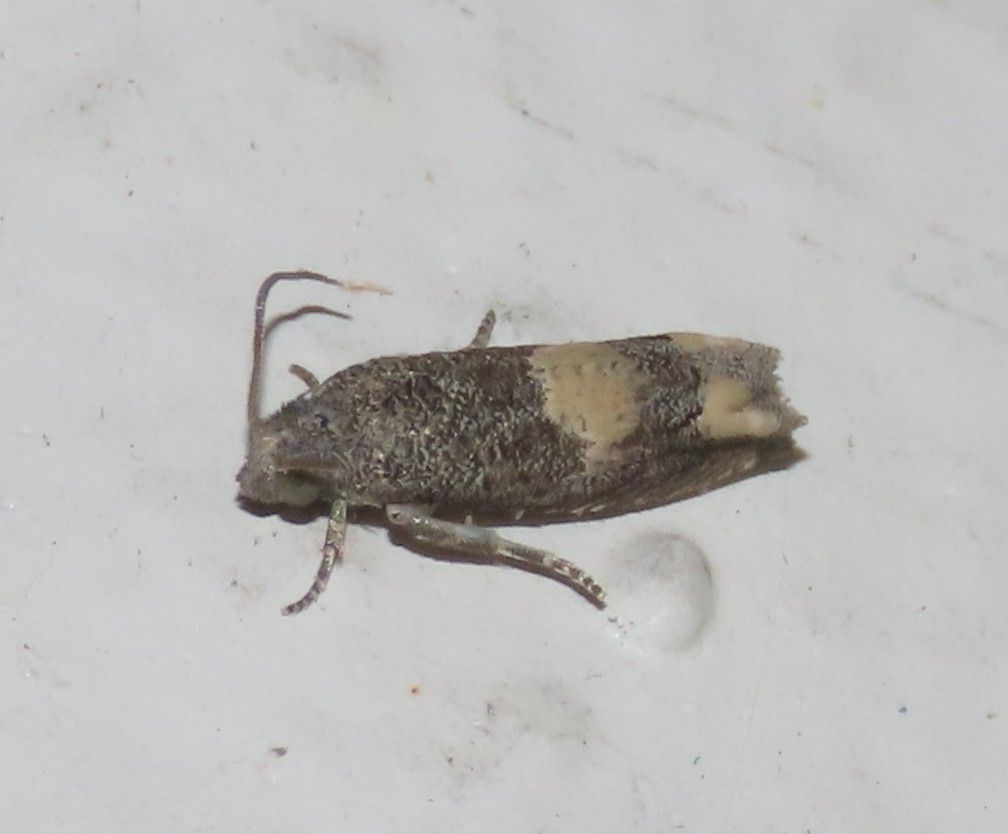
Ragweed Borer (Epiblema strenuana)
This moth is a grainy dark brown overall, with a buffy ST area. many bugs also have a buffy median patch, which can large (right), almost non-existent (left), or anywhere in-between. Recorded May to June, with records in August and October.
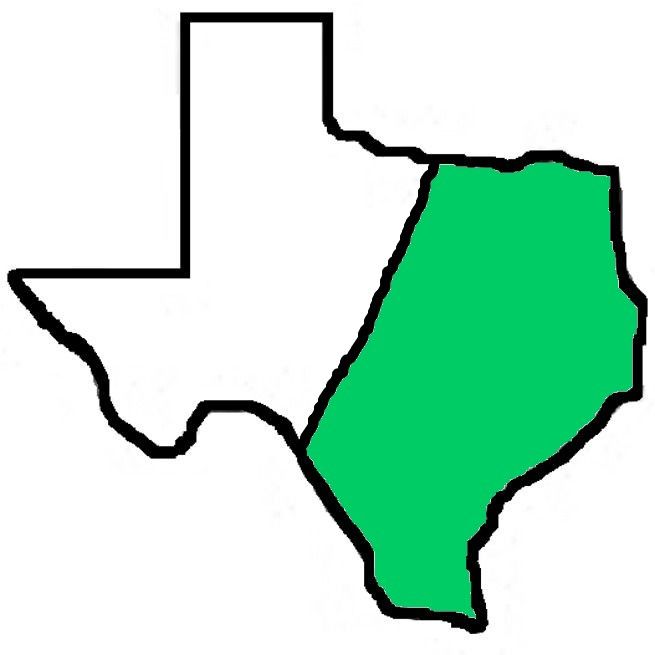
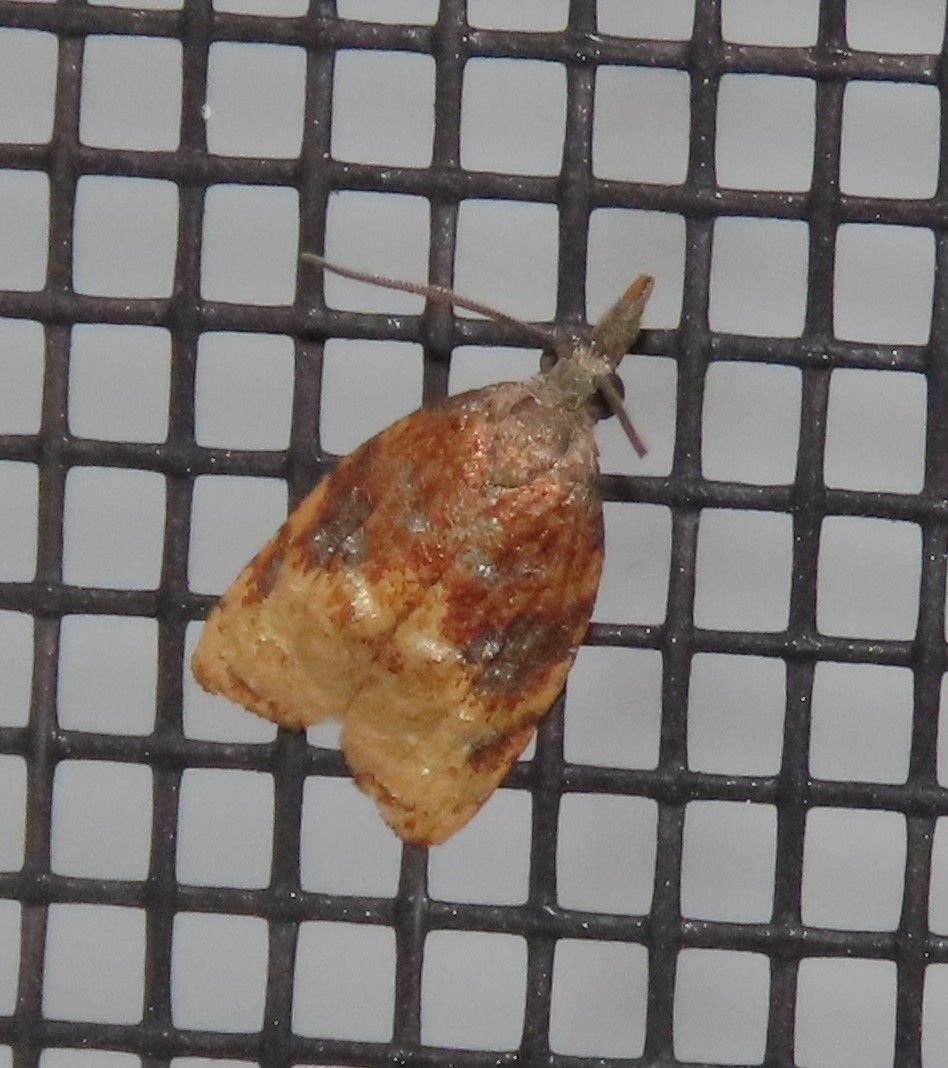
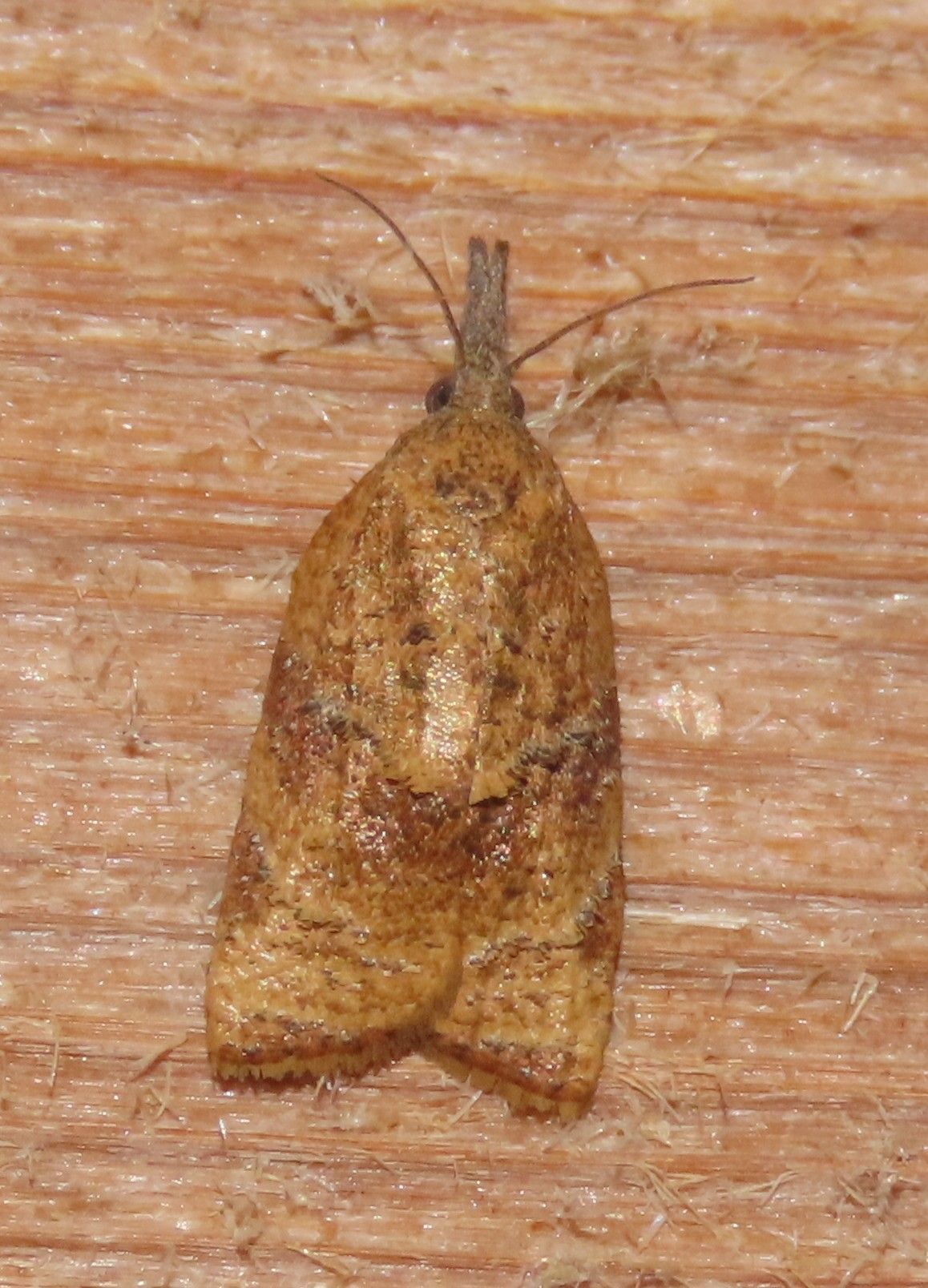
Omnivorous Leafroller (Platynota stultana)
Not to be confused with the Omnivorous Platynota (Platynota rostrana), the platynotas as a whole can be extremely varied and confusing, so much so that many experts are reluctant to ID a particular bug to species without DNA analysis or dissection! One useful field mark for the Omnivorous Leafroller is the gray head and palps which both sexes show. Both also tend to be orange in the basal half and bright yellow in the distal half (although there are some melanistic individuals), with a black patch that runs down diagonally from the costa to the inner margin. Recorded July - October.
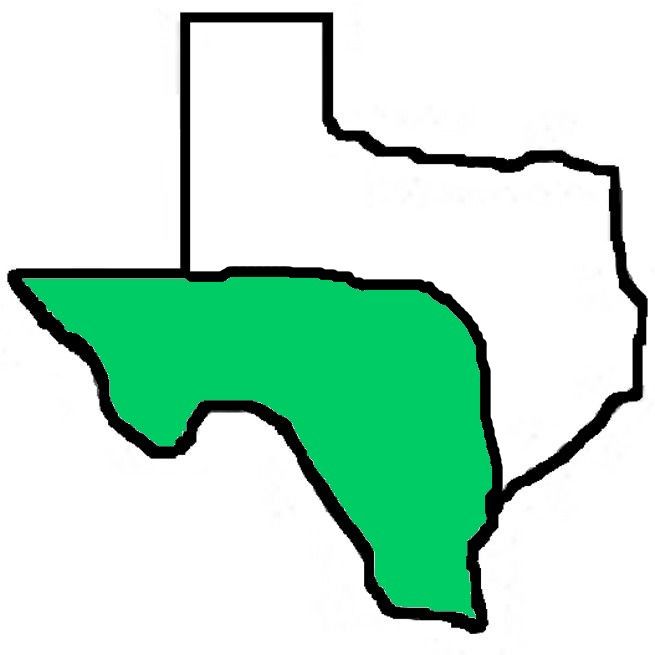
Pyralids

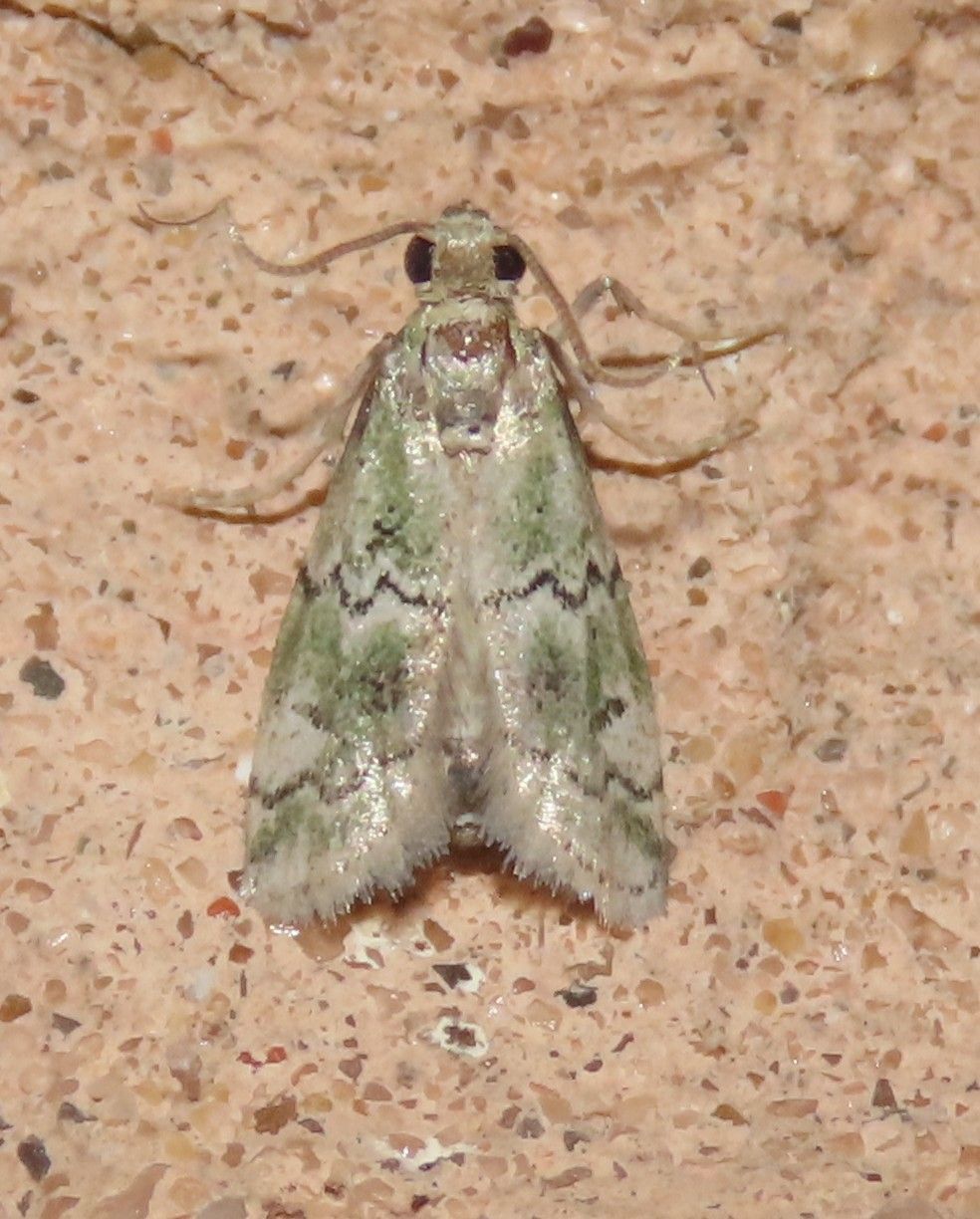
Flex-lined Cacotherapia (Cacotherapia flexilinealis)
A Texas specialty, this little moth is easily identified by its overall green coloration and the black zig-zaggy PM and ST lines. Recorded March - May, with records in January, August, and November.
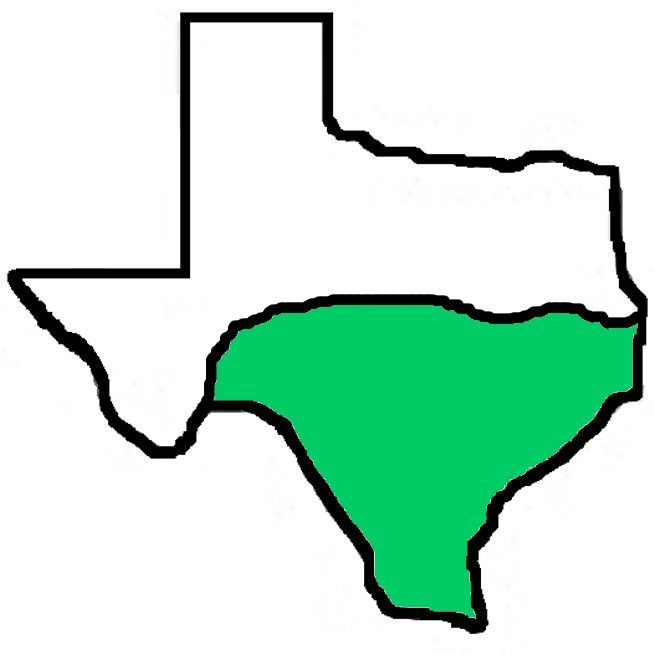
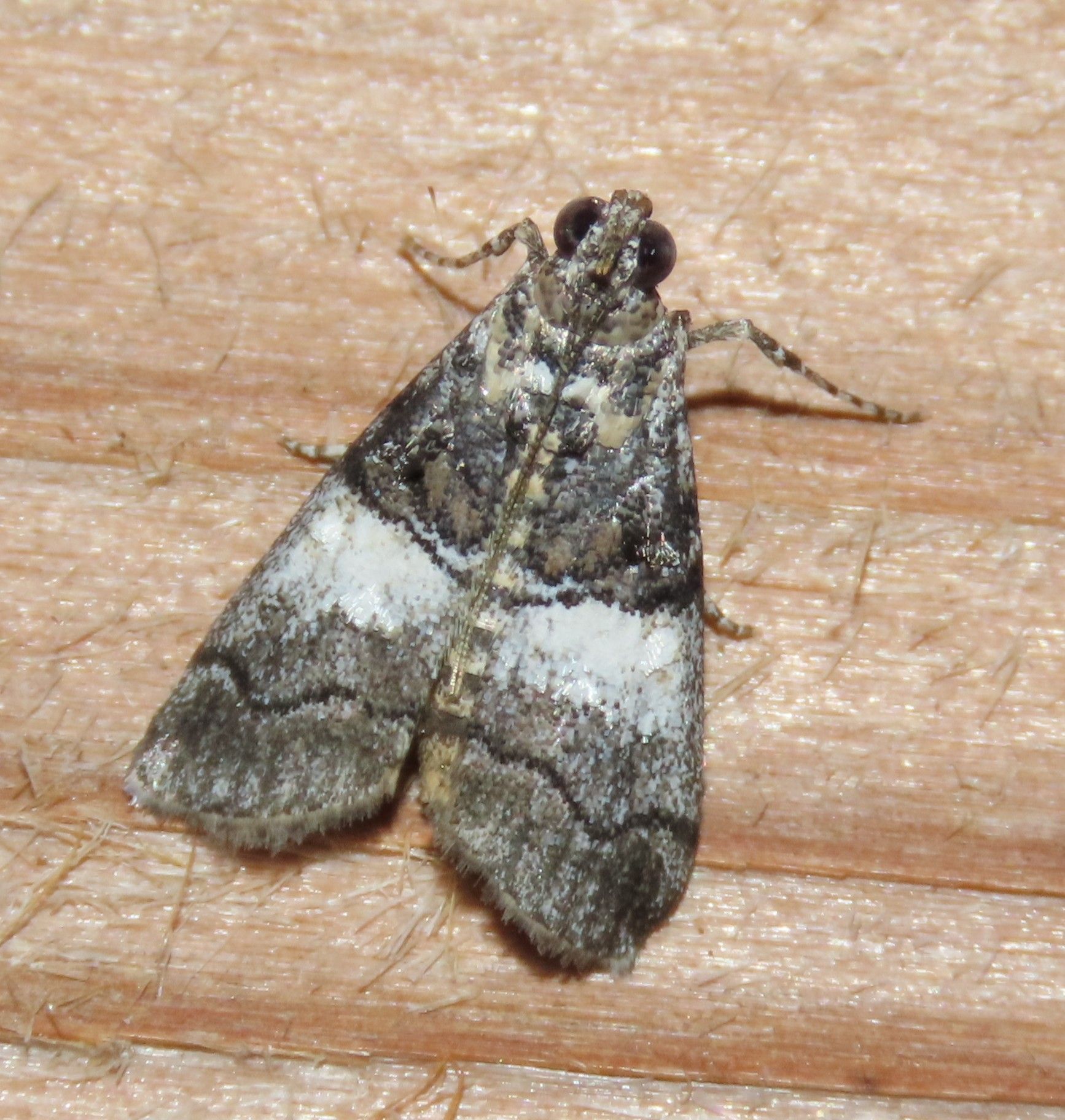
Maple Webworm (Pococera asperatella)

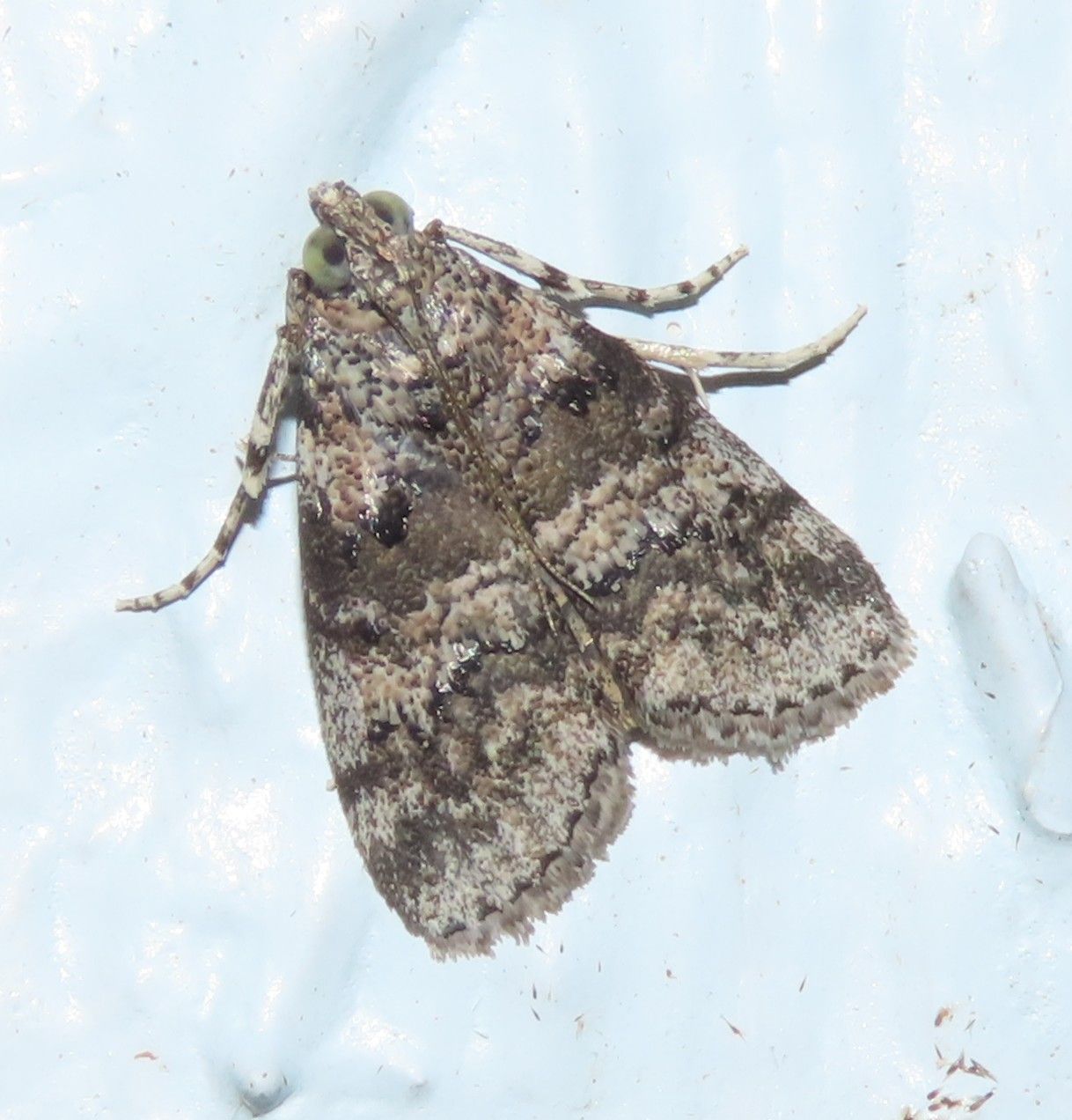
Tilting Webworm (Pococera tiltella)
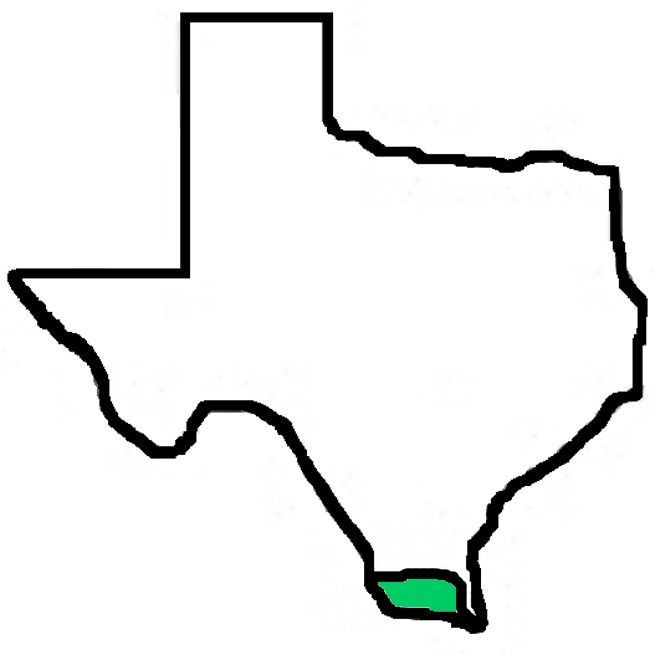
The Pococera moths can be tough to ID in any case, but when you have one widespread but variable species (the Maple) and another cryptic, little-known Valley specialty (the Tilting), it's enough to make you throw up the sponge! In general, typical Maples have a wide white median band, while the overall look of the Tilted (based on confirmed images on iNaturalist) is of a light grayish-brown moth with a darker brown median and PM band (although on some bugs the median band appears darker). The Maple was recorded May to October, with records in March; the Tilting was recorded in February, June, and October, with the highest occurrence in June.
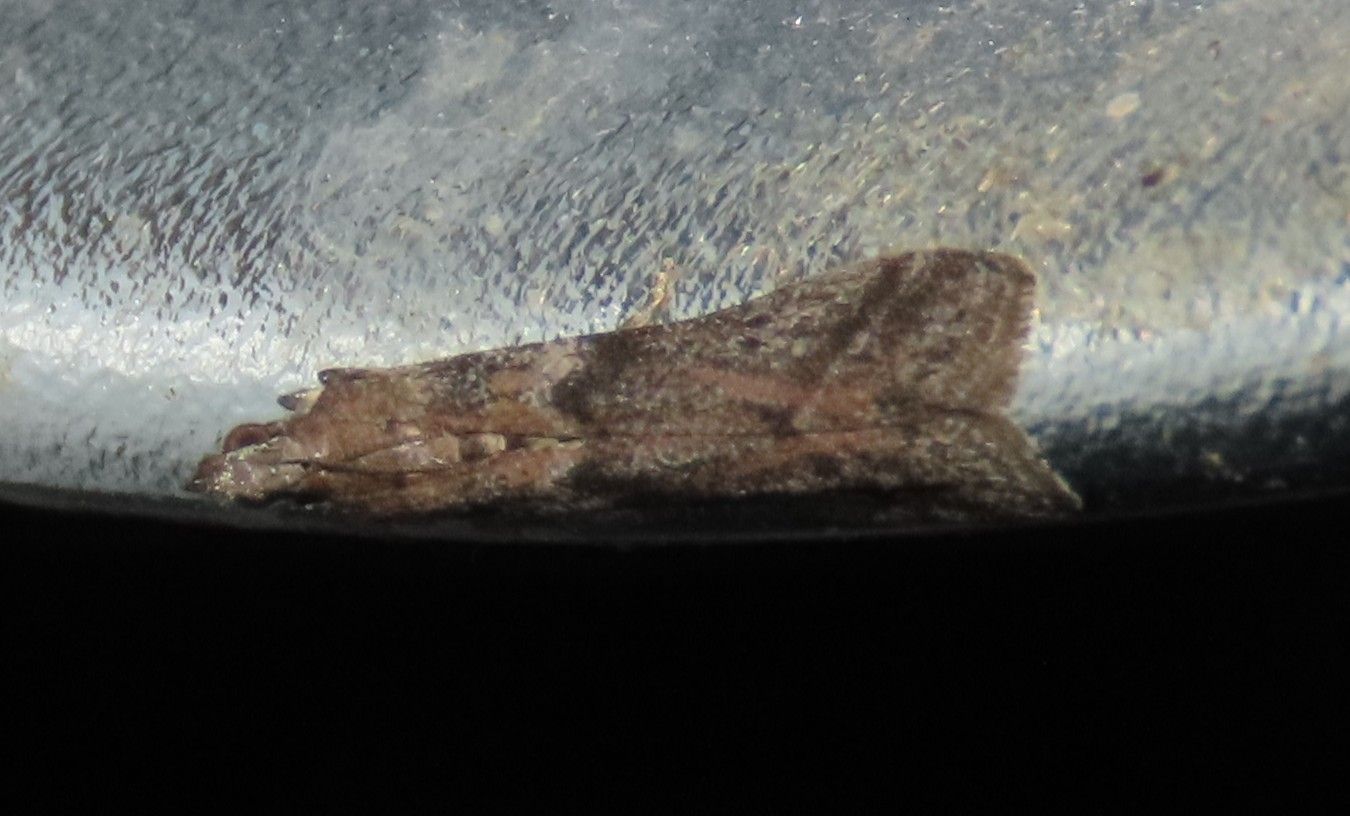
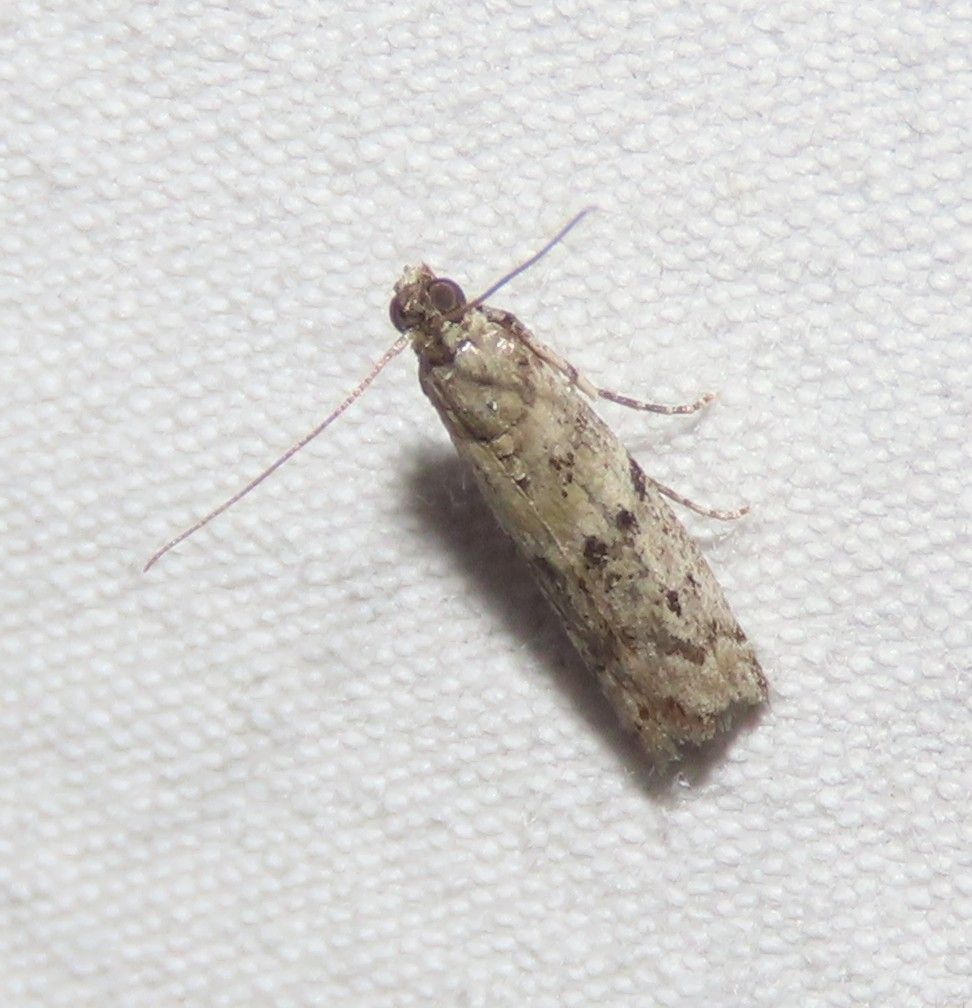
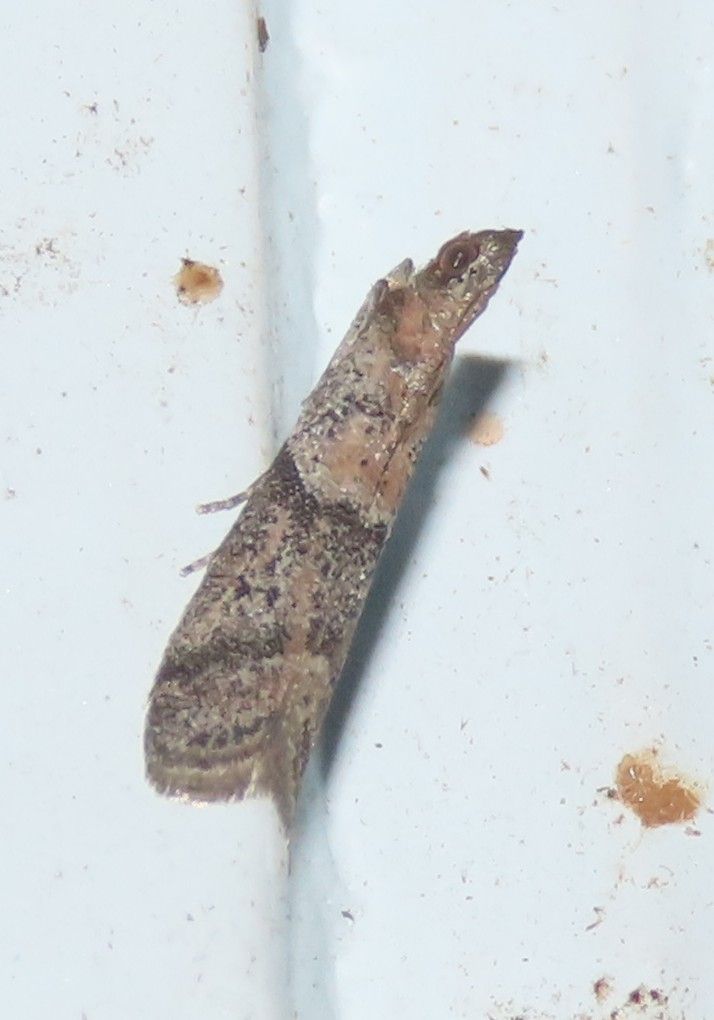
Dusky Raisin Moth (Ephestiodes gilvescentella)
Very similar to the related Reddish Ephestiodes, but the bugs I feel more comfortable calling Dusky Raisins are the ones with a more strongly marked AM and PM line (sometimes the AM line appears spotted) and better match other Dusky Raisin images on the MPG and BugGuide than the Reddish, but honestly, some may not be identifiable without DNA analysis. iNaturalist will often jump on one species over the other when submitted, so I tend to trust their judgment! Recorded January to May, July to August, and October to November.

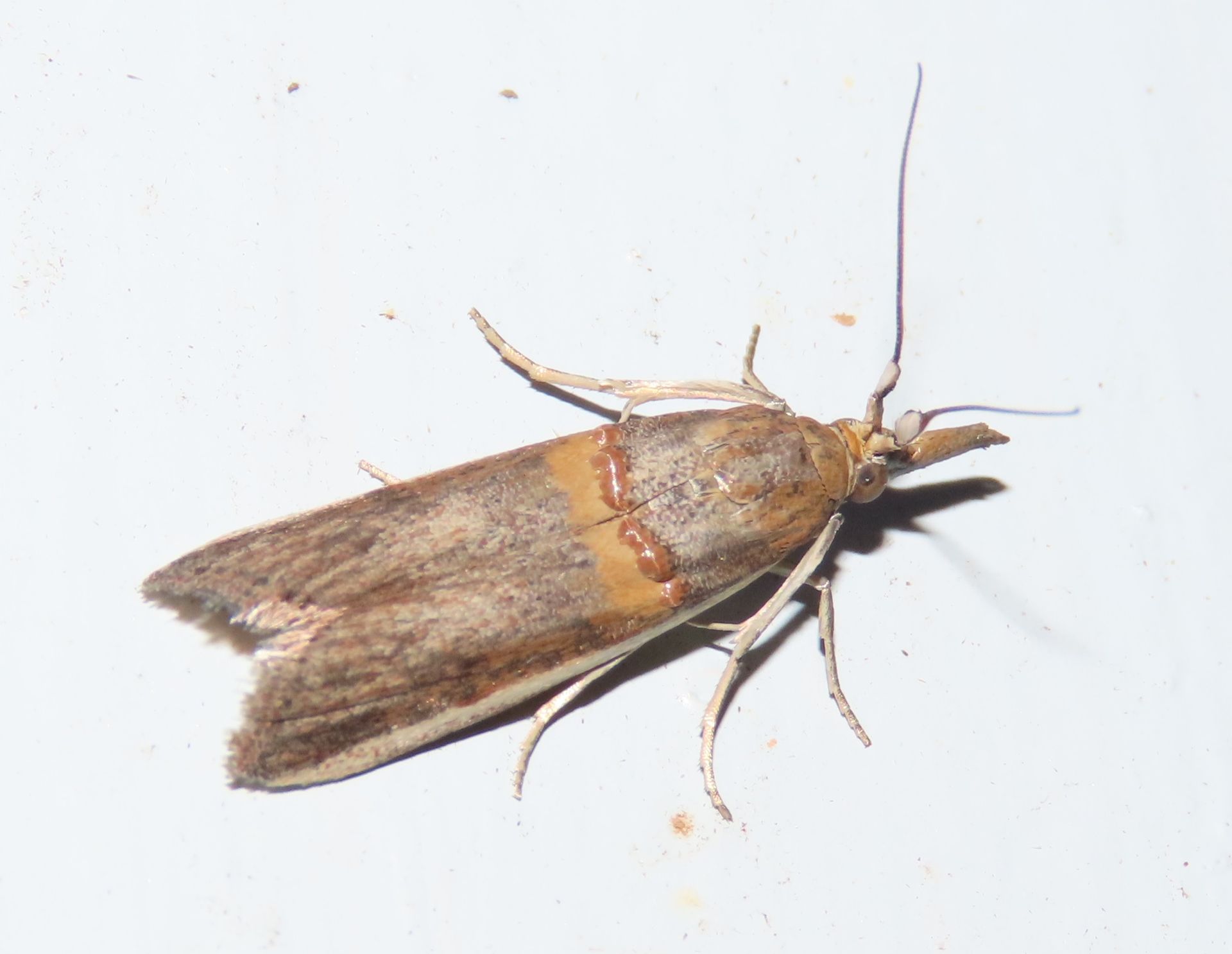
Gold-banded Etiella (Etiella zinckenella)
This distinctive brownish-gray moth has a thin band of chestnut-colored scales bordered distally by a wide ochre band. Beware that the long palps can sometimes be broken off! Recorded February and March.
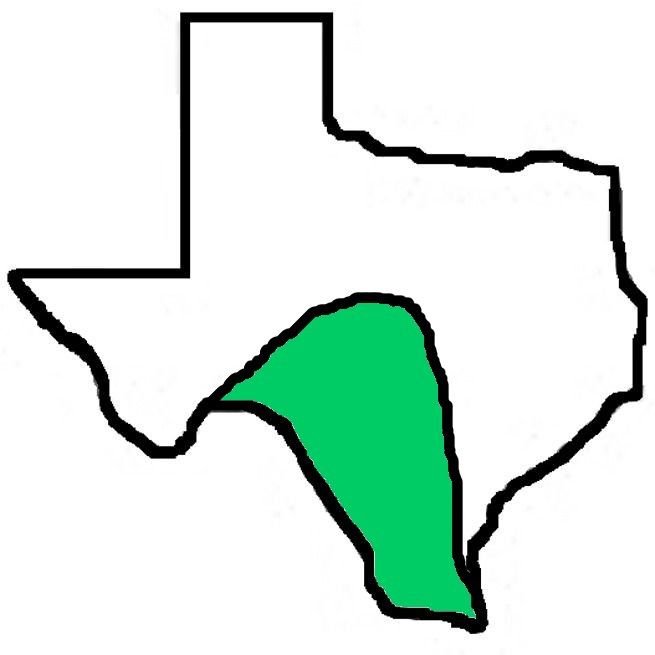

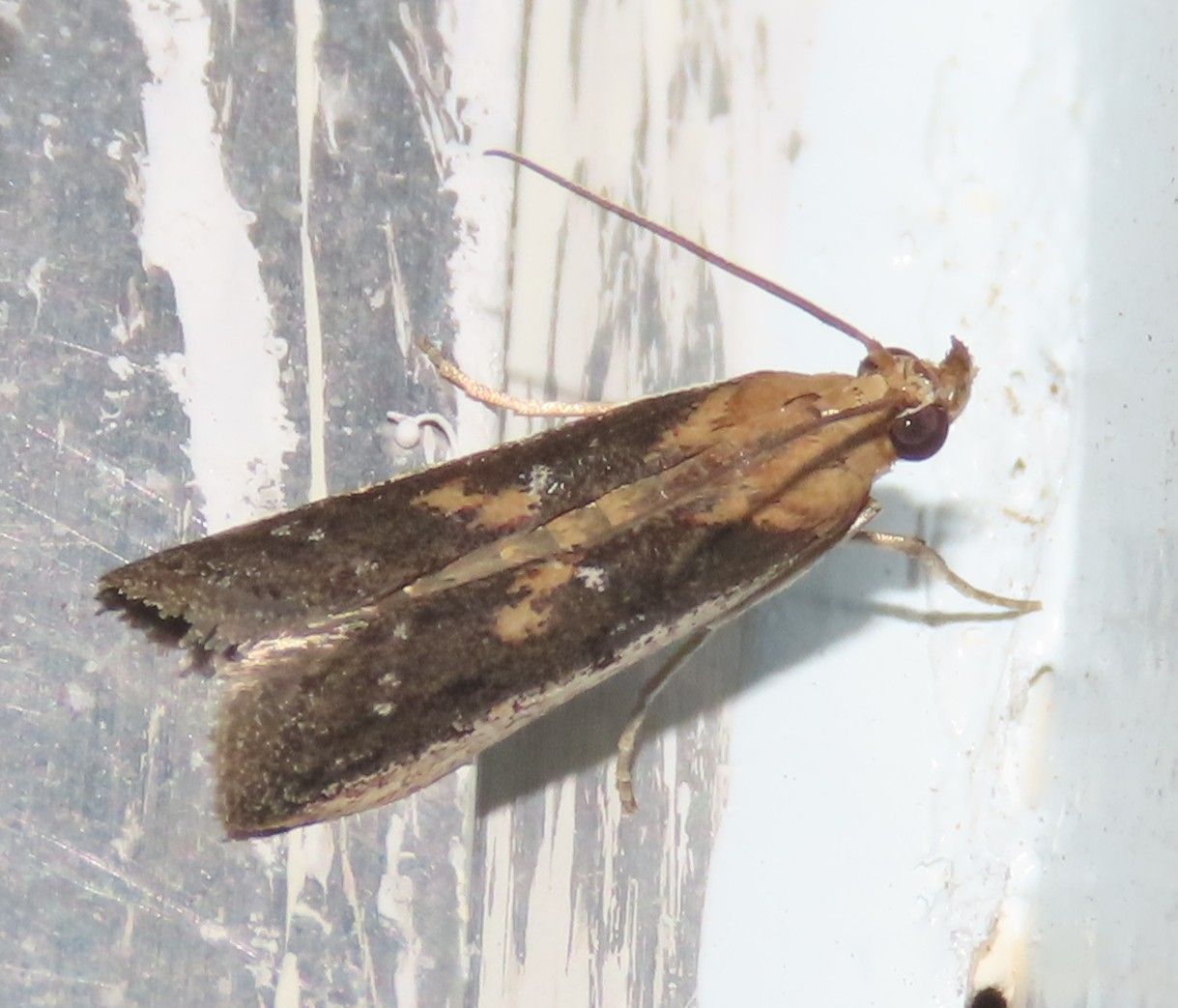
Oncolabis Moth (Oncolabis ignidorsella)
This brown-and-gold pyralid might be overlooked due to its similarity to the variable Lesser Cornstalk Borer, but is consistently dark brown with ochre-colored head and "shoulders". A pair of odd, honey-colored "check marks" sit below a couple of small white spots. Recorded March to May.

Button Moths
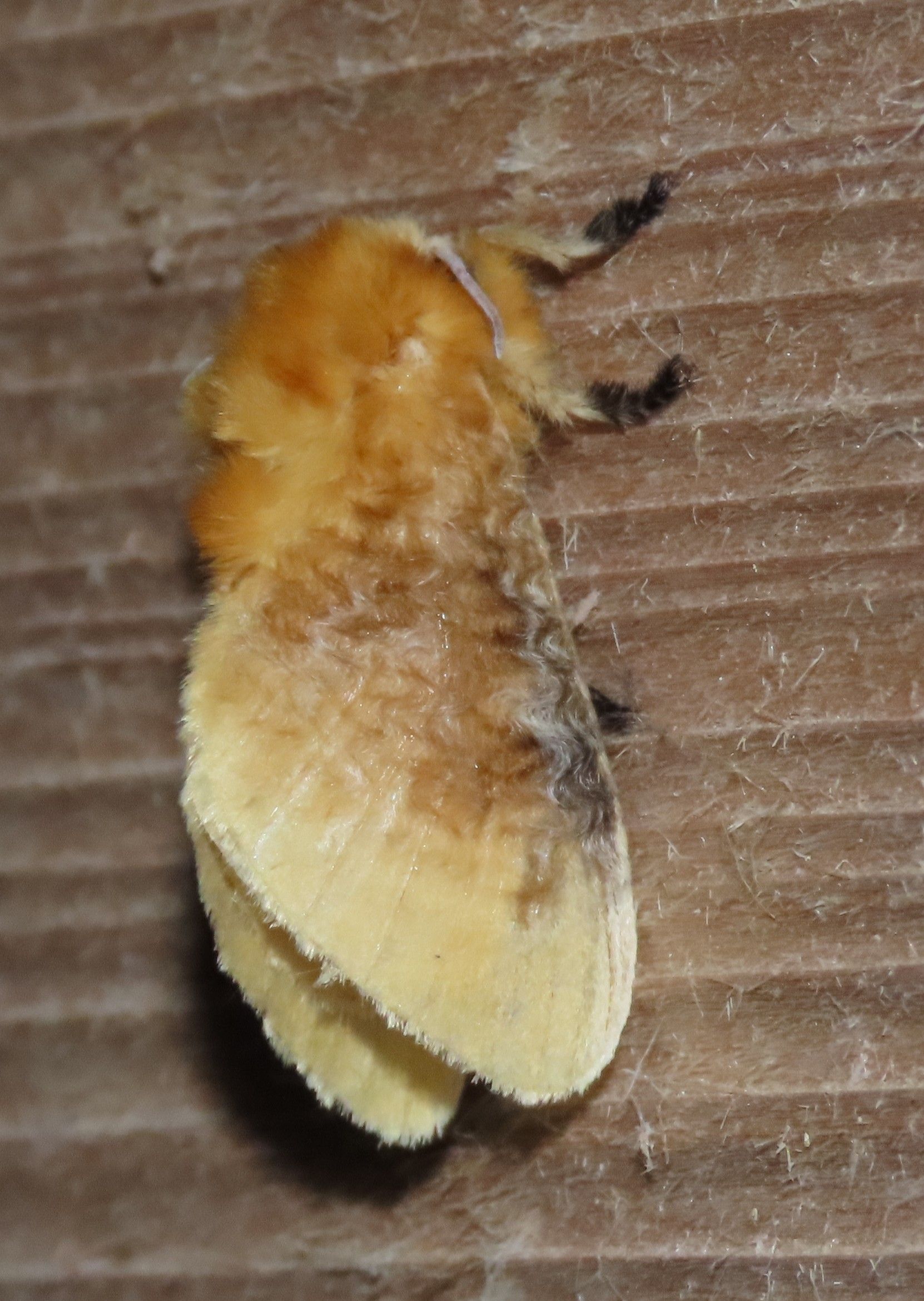
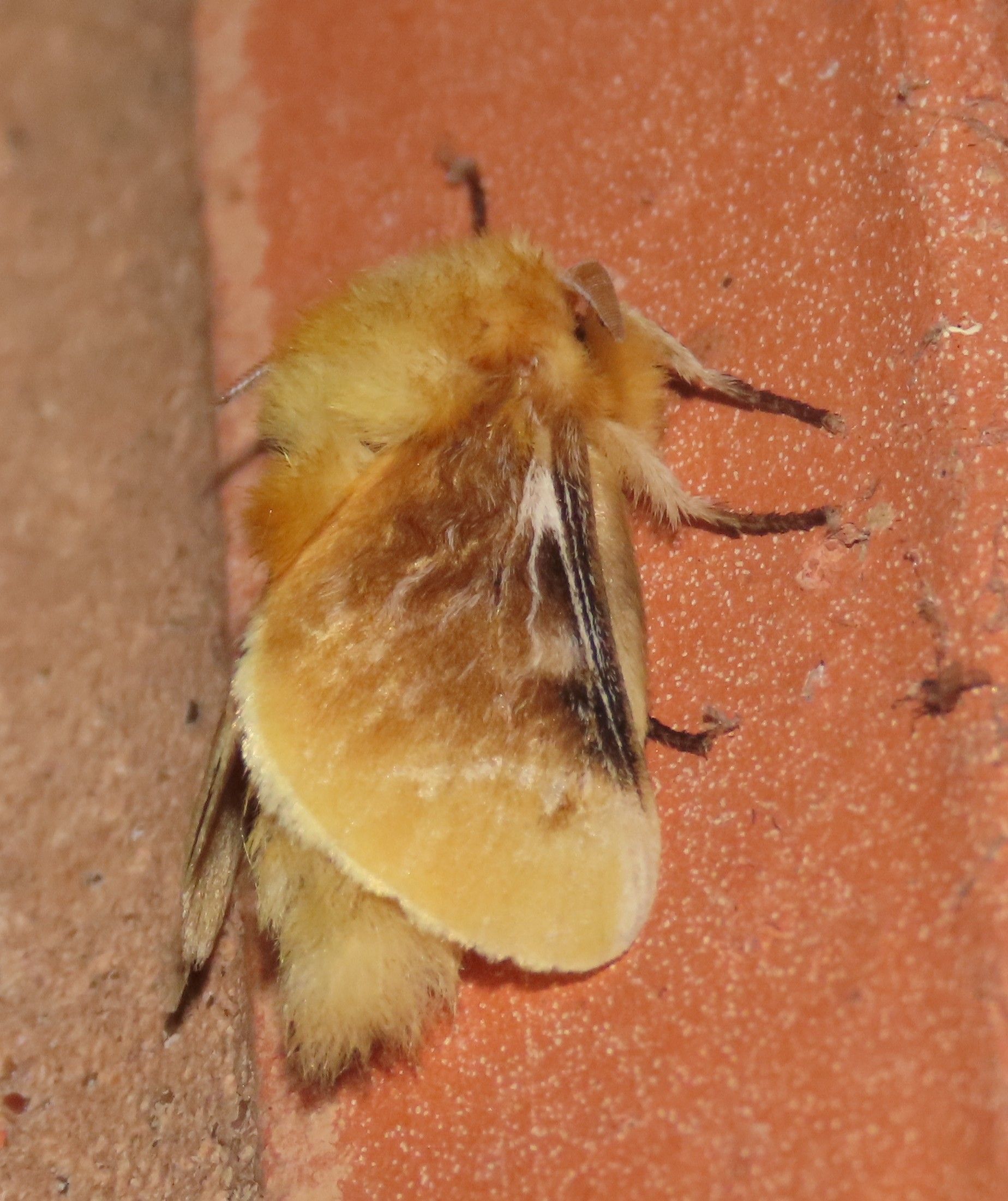
Southern Flannel Moth (Megalopyge opercularis)
This furry yellow moth has orchre-colored forewings with a yellow ST area. The pattern can be variable, but most bugs in the LRGV show the white rays bordering the darker costa, as in the bug on the right. Some will show more squiggly lines in the costal area. Recorded February - August.
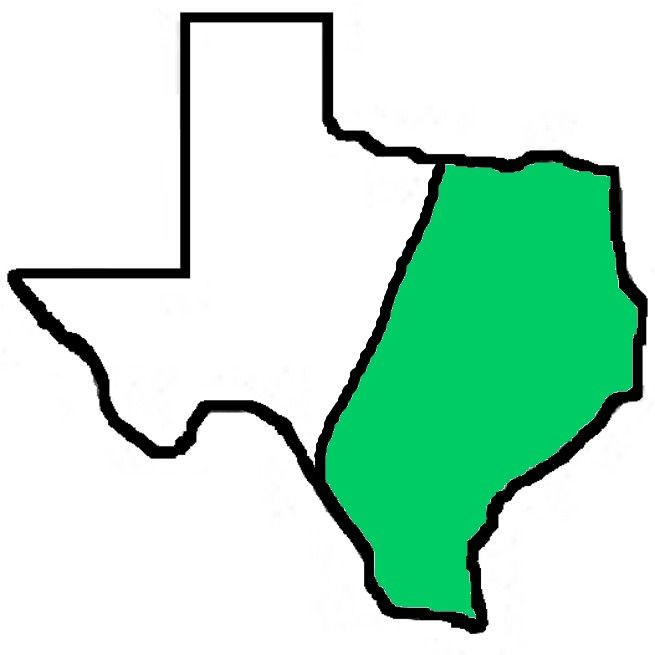
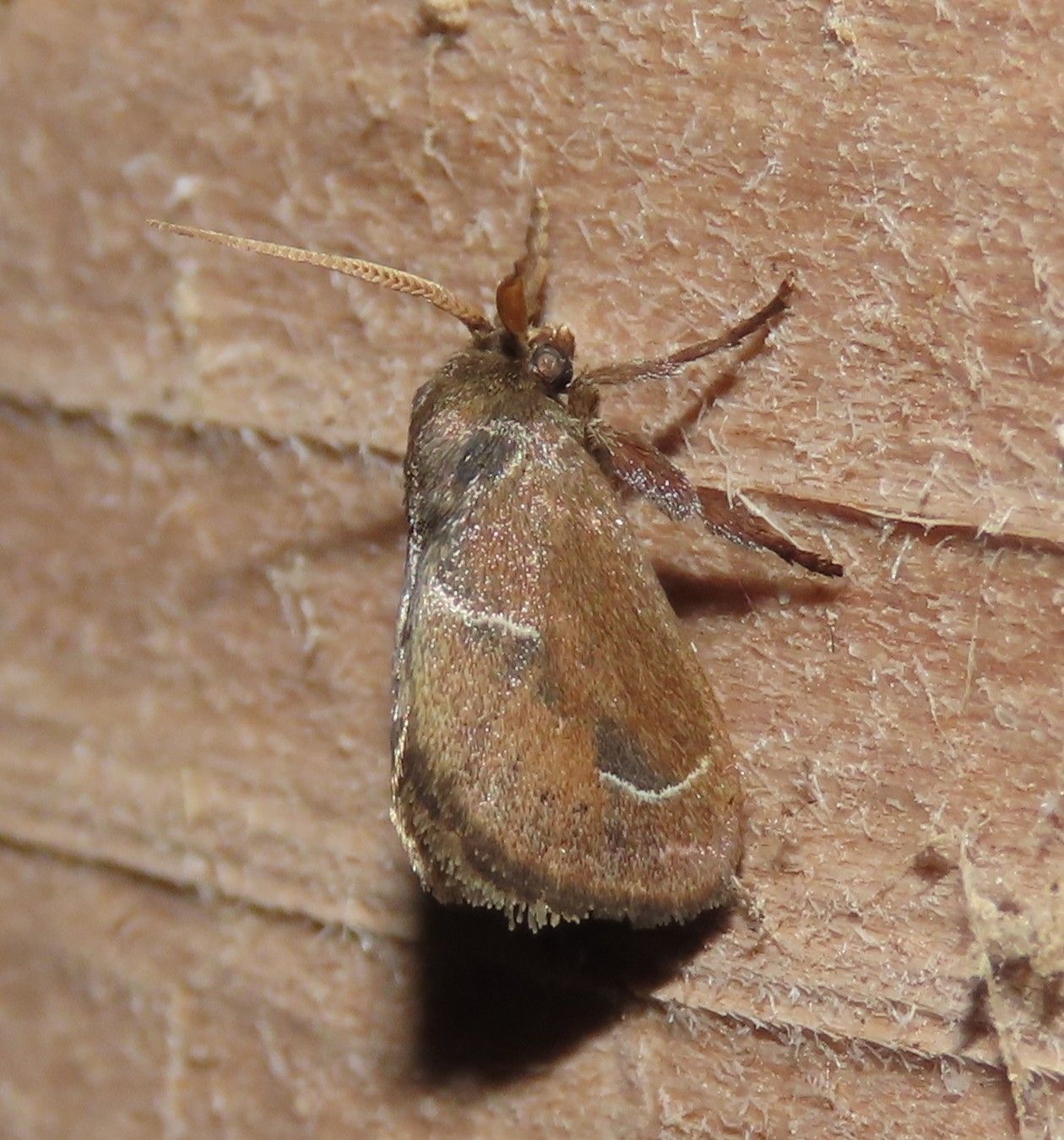
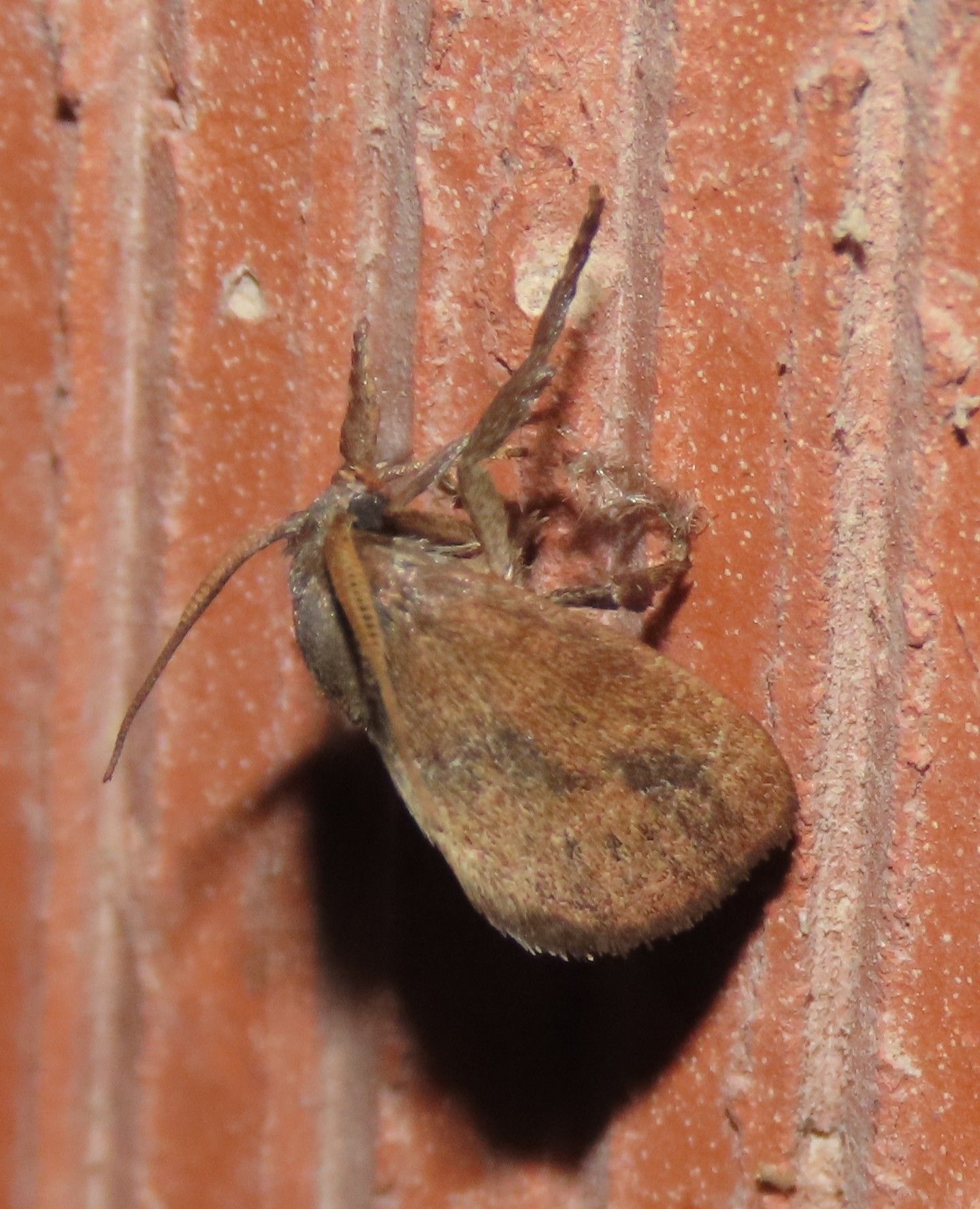
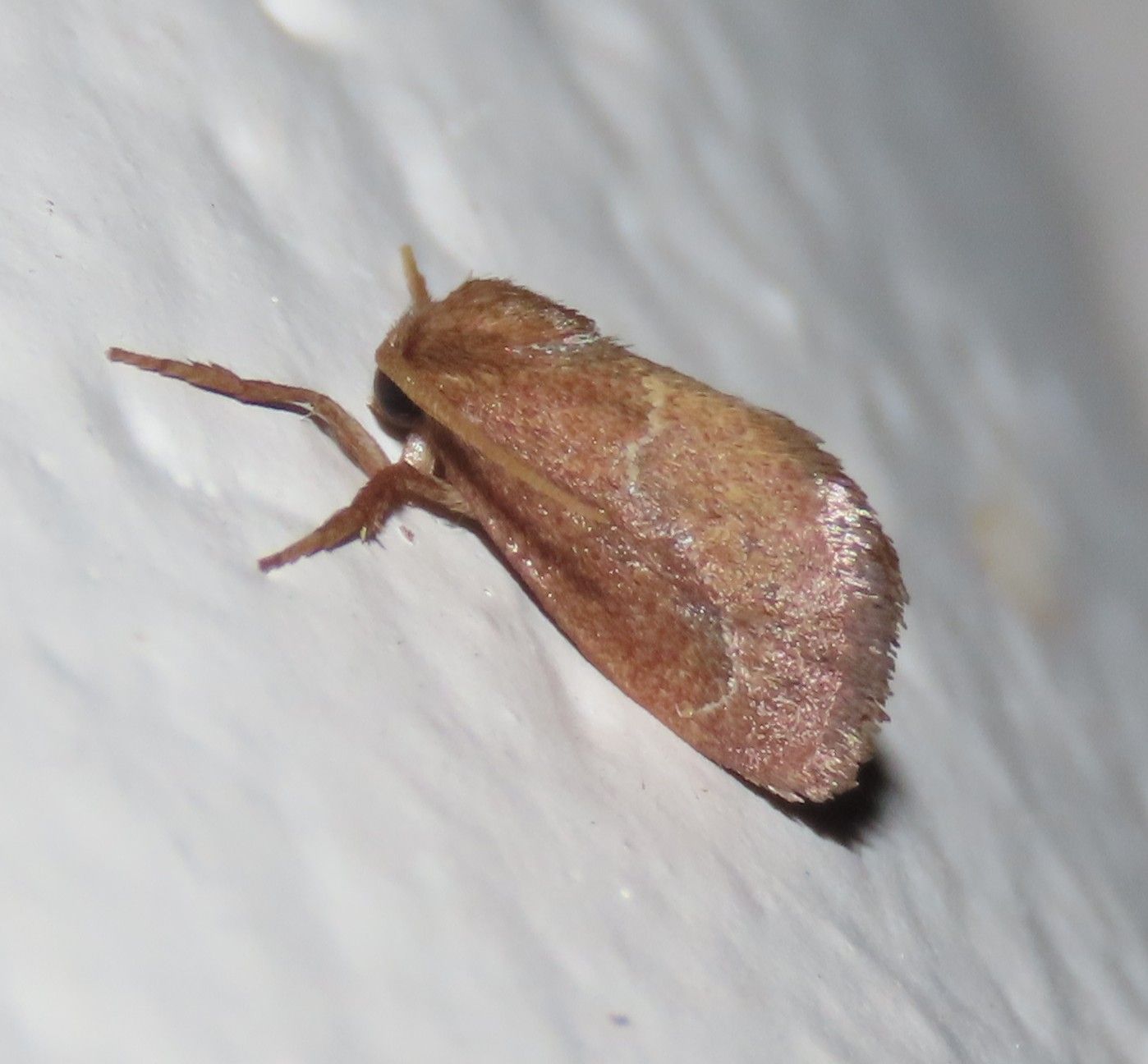
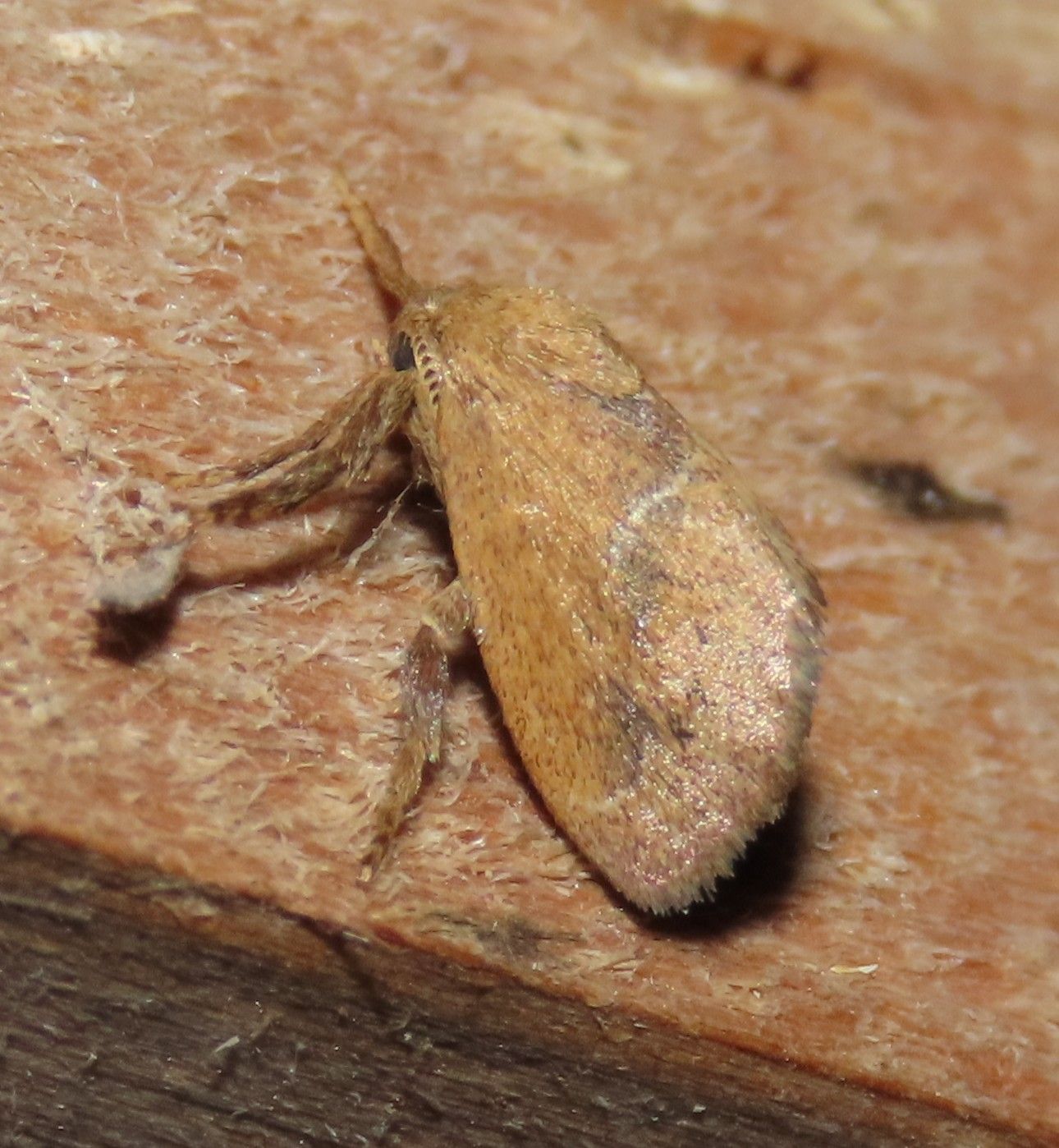
Twin Slug Moth (Adoneta gemina)
A Texas specialty, with most records being in the south. This small brown button moth usually shows a sinuous white line running from the inner margin of the forewing to the ST area, but this line can be partially broken or totally absent. In that case, look for the darker brown smudges that would border this line, along with small brown spots in the ST area. Some individuals (like the bug on the far right) can be quite golden. Recorded February - March and June - November.
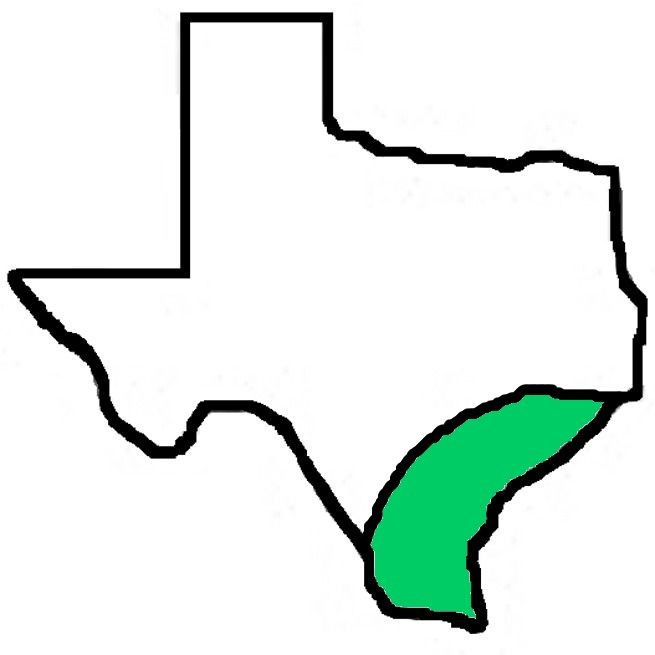
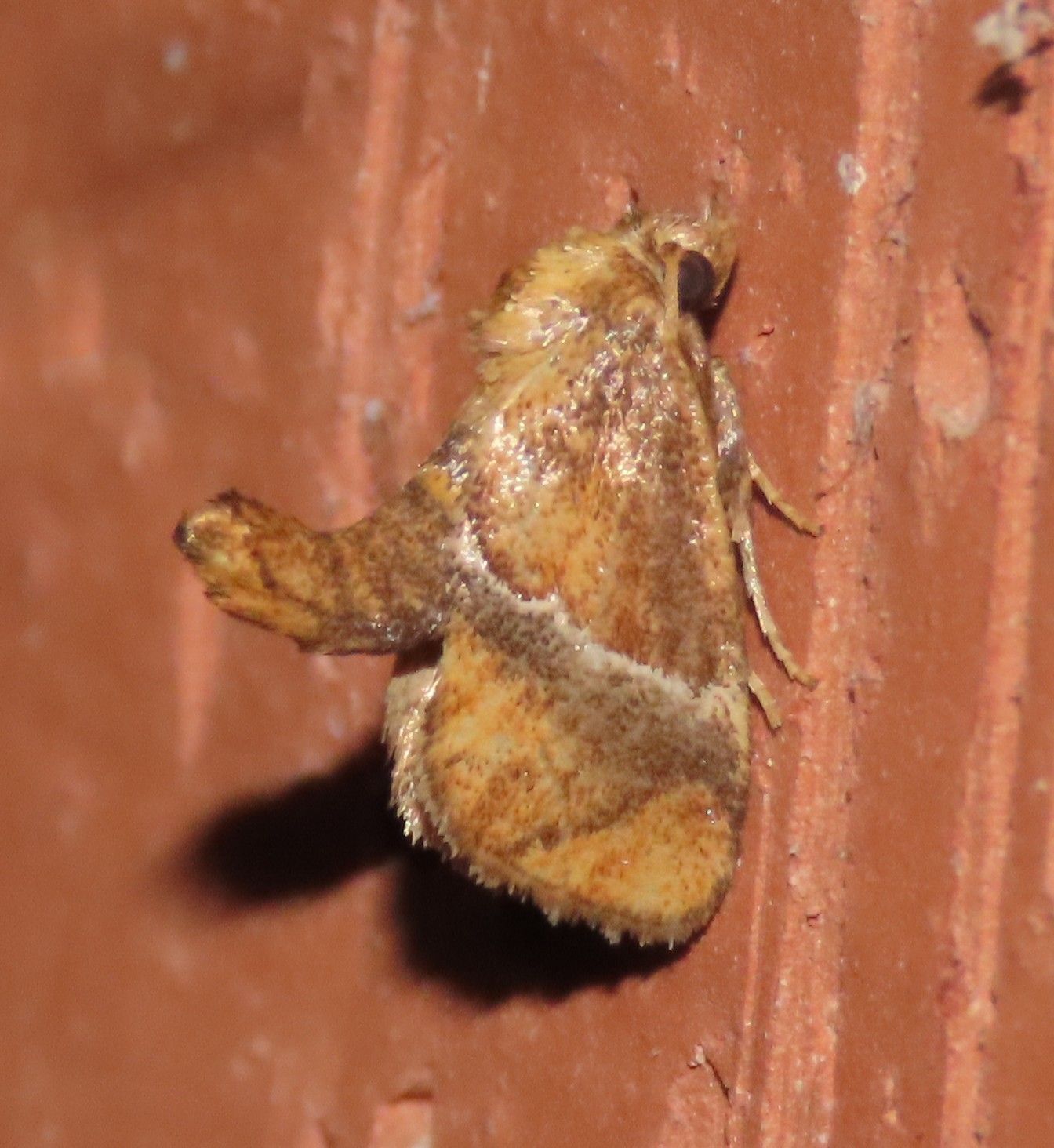
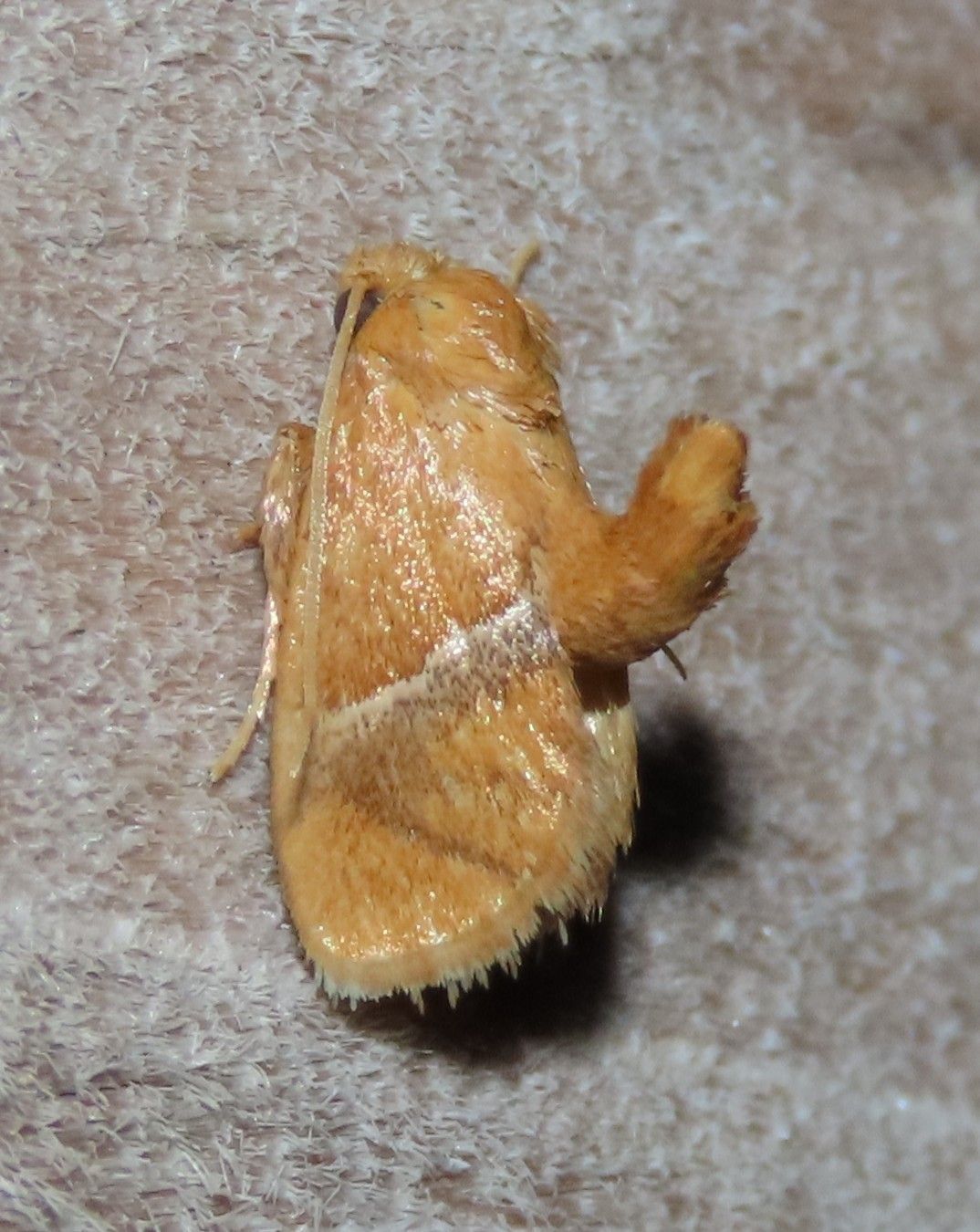

Yellow-shouldered Slug Moth (Lithacodes fasciola)
Even though these bugs look more like the illustration of Graceful Slug Moth (Lithacodes gracea) in the excellent Leckie & Beadle guide, I was assured that at least the bug on the far right was indeed a Yellow-shouldered, so that's what I've been calling these. They do show the strong diagonal line across the ST area that Yellow-shouldered is supposed to show, but the white median line isn't as "toothed" as in other images of Yellow-shouldered, so in reality I suppose these bugs could be either. For now I'm going with the experts and leaving these labeled as Yellow-shouldered. Recorded March - October.

